




WINTER 2025
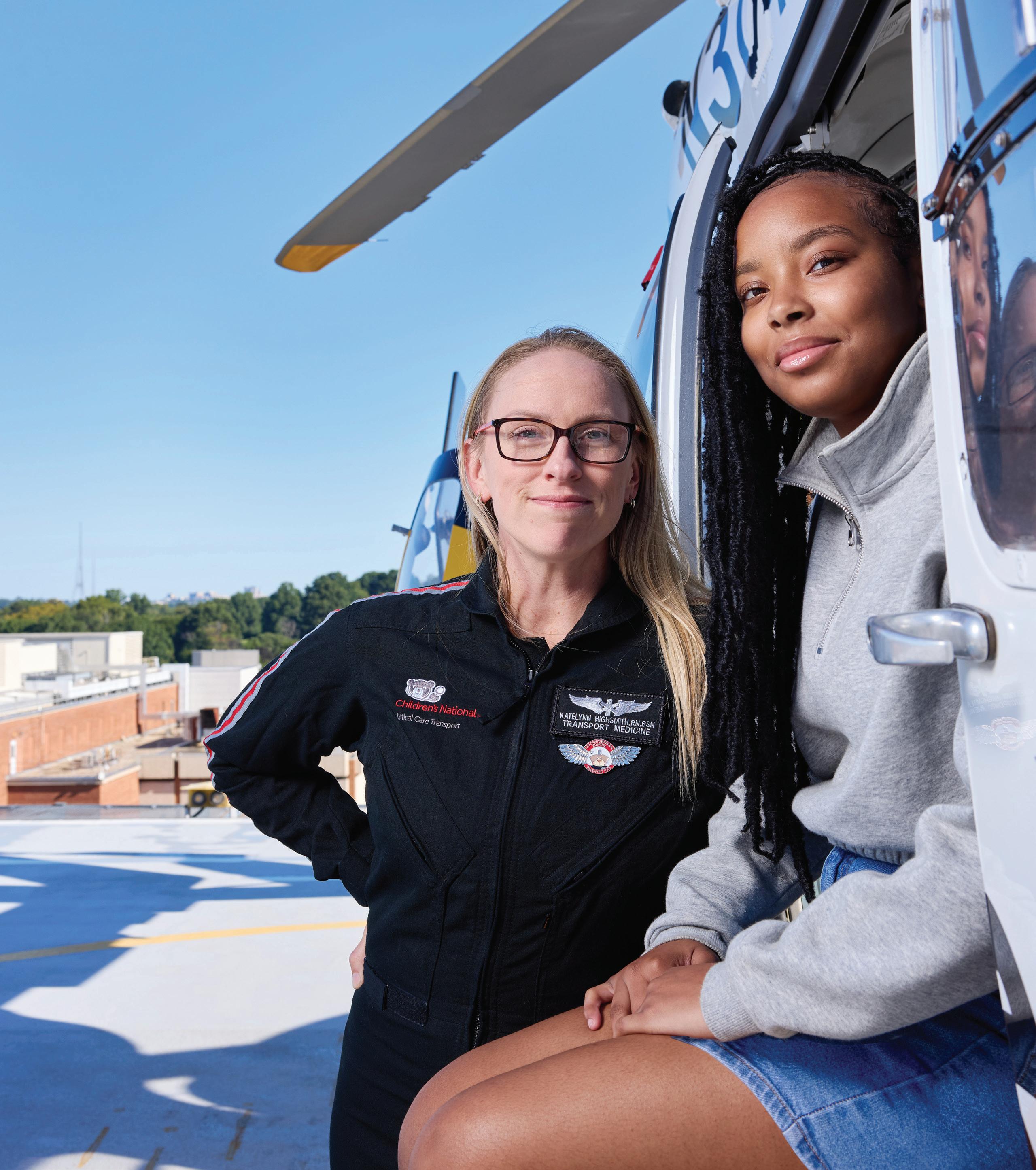
SKYBEAR DELIVERS WHEN EVERY MINUTE MATTERS
How Our Transport Medicine Team Saves Lives
The Clark Foundation Builds Healthier Futures Recognizing Extraordinary Leaders
The transport team saved my baby’s life. I will never forget their professionalism and precise teamwork.”
―
Darrell, Destyni’s Dad

Destyni’s journey to health illuminates how the transport team embodies what makes Children’s National exceptional: our people, world-class specialty care and enduring commitment to children and families.”
― Michelle Riley-Brown
One of the hardest parts of leading a pediatric hospital is knowing that we meet many families on the most heartwrenching days of their lives ― when an accident or illness changes everything in an instant. In those moments, care often begins with SkyBear and our Transport Medicine team. Each time I hear them lift off from our helipad, I pause in awe of their steady calm and extraordinary skill.
This issue of Believe takes you behind the scenes of this lifesaving work to hear from the people who make it possible and the patients who inspire us.
In our cover story (p. 6), Destyni’s journey to health illuminates how the transport team embodies what makes Children’s National exceptional: our people, world-class specialty care and enduring commitment to children and families. Whether our providers are giggling with a child at a well visit or delivering them to our intensive care unit in a medical crisis, their dedication shines through.
I hope you also spend time to learn about two dear colleagues who are retiring after extraordinary careers (p. 16): David Wessel, MD, our chief clinical officer, and Linda Talley, MS, RN, NE-BC, FAAN, our chief nursing officer.
We will miss their wisdom and compassion. The talents they shared and team members they mentored will leave a lasting impact for years to come.
During the holiday season, I can’t help but see the world through a lens of gratitude. I am moved by the Clark Foundation’s transformative generosity (p. 22), thankful for the Dome family’s unwavering commitment to care (p. 32) and humbled by KenLeigh’s joyful impact on our patients (p. 42).
These and other stories show the people who make a difference at every step in the journeys of our patients, from fragile newborns to confident teens.
Thank you for all you do to support children and families in our region and beyond. I wish you a peaceful and healthy holiday season.
Warmly, Michelle Riley-Brown, MHA, FACHE President & CEO Children’s National Hospital

We often receive calls from medical providers who have reached the limit of their facility’s resources for a specific child. We provide guidance on immediate care and stabilization of that patient while we develop a plan to get them to Children’s National.”
― Erin Dillon, RN

EDITORIAL
Jean Bratman
Georganne Coco
Jessica Danaceau
Kitson Jazynka
Jennifer Morrison
Katherine Shrader
Margetta Thomas
Dan Wilcock
Maura Zehr
PRODUCTION AND DESIGN
Christina Aycock
Alex Bozoghlian
Jen Littrell
Rachel Phillips
Allison Chess Ruiz
CONTRIBUTORS
Ali Chope
Meagan Davis
Lauren Scheinert
Leslie Schrader
Morgan Worley
COVER STORY PHOTOGRAPHY
Tracey Brown
Children’s National Hospital Foundation works with generous donors to advance the hospital’s mission. Gifts from individuals, corporations, foundations and community organizations fund world-class care and research for kids in the Washington, D.C., region and beyond.
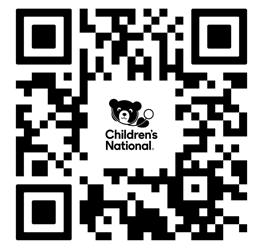
For Believe’s digital experience, visit childrensnational.org/ believe or scan the QR code
ONLINE childrensnational.org/giving FACEBOOK.COM/childrens.national INSTAGRAM.COM/childrensnational LINKEDIN.COM/company/ childrens-hospital-foundation
(Cover) Katelynn Highsmith, RN, of our Transport Medicine team with patient Destyni
When Destyni became dangerously ill and needed critical care, our Transport Medicine team acted fast to bring her to Children’s National. Now, she dreams of becoming a fashion stylist, interior designer or professional volleyball player.
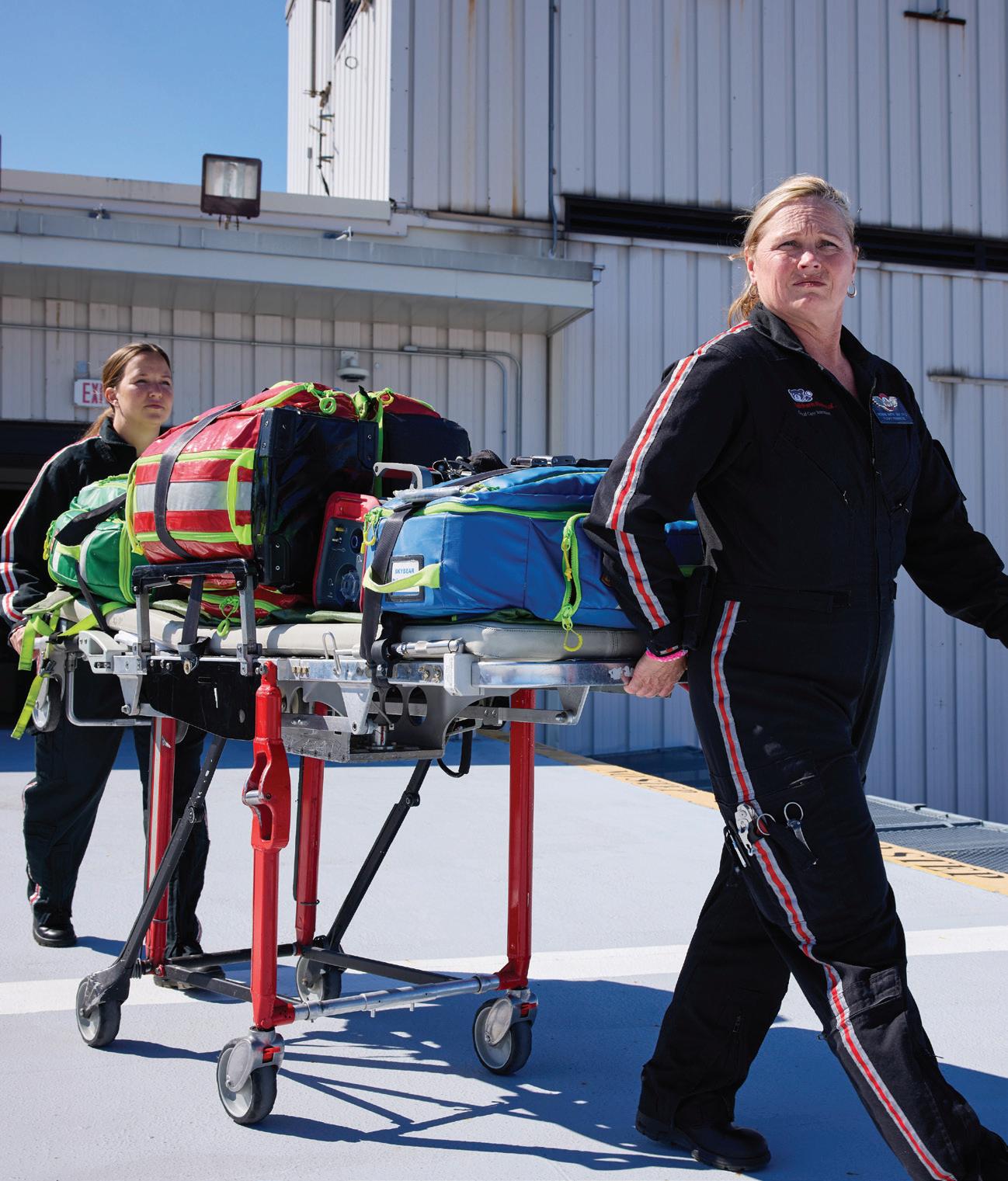

Dr. David Wessel, executive vice president, chief clinical officer, physician-in-chief and the IKARIA Distinguished Professor of Critical Care Medicine, and Linda Talley, chief nursing officer, reflect on their remarkable careers at Children’s National.
The Clark Foundation Builds Healthier Futures
The A. James & Alice B. Clark Foundation played a historic role to advance pediatric medicine and boost the health of the Washington, D.C., community.
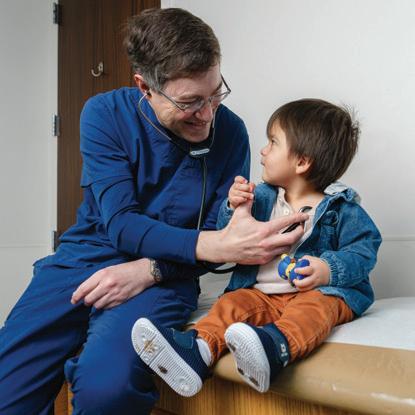

28 DISCOVER THE ART OF HEALING
Family Care, Step by Step
Jennifer Floran, a clinical social worker, looks for opportunities to provide “extra steps of care” for kids and their parents.
36 POWER CARE THROUGH PARTNERSHIP
Helping Kids Redraw Their Worlds
Tracy’s Kids Art Therapy Program in honor of Marcelle and Patrick Leahy uses the creative process to help patients with cancer and blood disorders cope and heal.
40 GROWN STRONGER
Ariana Soars
Successful surgeries and expert guidance about her rare congenital condition gave Ariana the ability, independence and courage to thrive.
42 GIVE BACK YOUR OWN WAY
KenLeigh Delivers Holiday Cheer
“A lot of kids have to stay in the hospital during the holidays, and that’s a tough place to be,” says KenLeigh. “I wanted to give them some fun and special memories.”
44 Professorships at Children’s National
In 2025, we announced new faculty appointments. Professorships provide our leaders with the resources to advance pediatric discoveries.
A Day With Dr. Bear
Compassionate Care Is a Family Affair
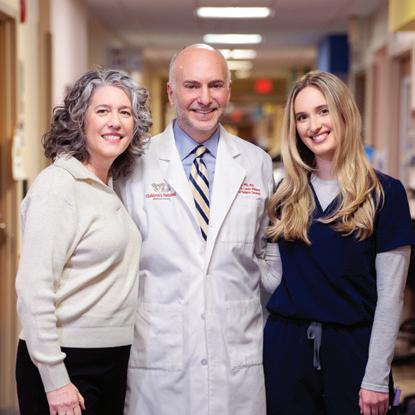
Dr. Jeffrey Dome, Lauren Dome and their daughter Amelia Dome all play a vital role in delivering care at Children’s National.
Children learned about our pediatric specialties during an interactive event with the hospital’s mascot.
45 A Starry Night to Brighten Futures
A futuristic gala celebrated our partnership with the United Arab Emirates to transform children’s health.
46 Local Girl Scouts Lift Spirits
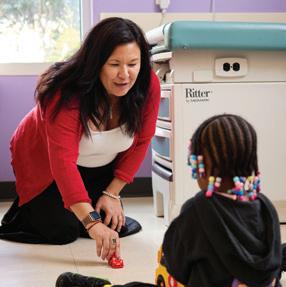



47 Dunkin’ Prom: Under the Big Top
Teen patients celebrated with a circus theme at the hospital’s third annual prom.
Fall Fest, Champions for Children’s National
A community of philanthropists hosted a gathering for families that enlivened our Children’s National Research & Innovation Campus.
Zoé, 12, shares what gave her the courage to recover from leukemia. 32 MAKE A DIFFERENCE
A troop in Great Falls, Virginia, rallies for kids in our Cardiac Intensive Care and Heart and Kidney units.
48 Race for Every Child
Our 13th annual 5K and Kids Dash brought hope and healing to patients and their families.
49 Holidays at the Hospital
A grateful parent recalls how staff made his family’s Christmas in the hospital sparkle.
50 A Patient’s Perspective
Destyni, 14, was too weak to move. “My body hurt,” she says. “I didn’t move much for two days. My dad was worried.” Destyni’s dad, Darrell, took her to a local hospital emergency department.
What began as a blur of pain and exhaustion for Destyni was about to become a fight for her heart ― and her life.
“The people there tried to examine me, but didn’t have the right machine,” she recalls. “I didn’t know what was going on. There was no thinking. I was on the stretcher. I just closed my eyes and blacked out.”
The hospital called the Children’s National hotline on that late summer night in 2024. SkyBear, our rapid helicopter transport service, soon would be on its way to care for Destyni and deliver her to our Cardiac Intensive Care Unit (ICU).
“Our Transport Medicine teams bring a passion for taking care of patients and families on their most terrifying days, when a child’s health is at risk,” says Monnie Smith, a flight paramedic with more than 20 years of experience as a critical care provider. “Our job is to provide top-notch care, keep them
safe, get them where they need to go and provide a little comfort along the way.” Smith was one of the paramedics on Destyni’s SkyBear flight. It was a critical part of the care that would save her life.
Destyni, now 15, is well. She gets good grades and is focused on college and her future. She dreams of becoming a fashion stylist, interior designer or professional volleyball player.
“What happened to Destyni is the worst thing that has ever happened to our family,” says Darrell. “Even talking about it is hard.”

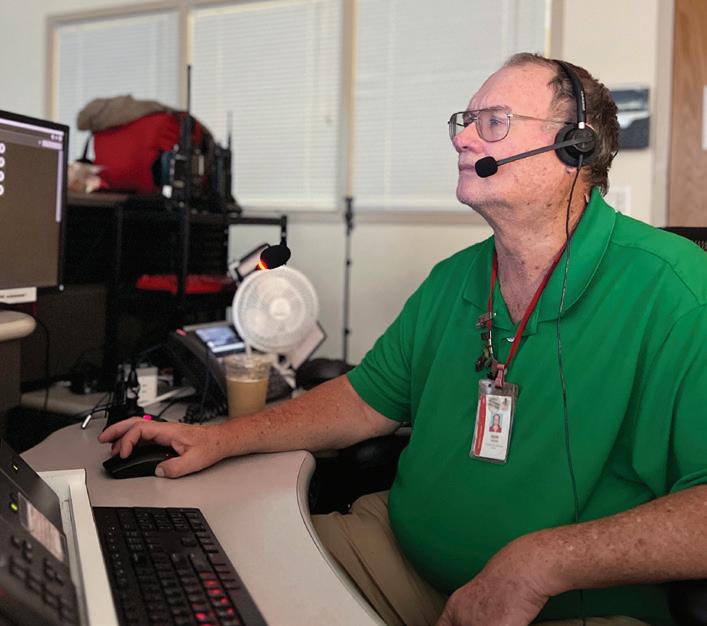
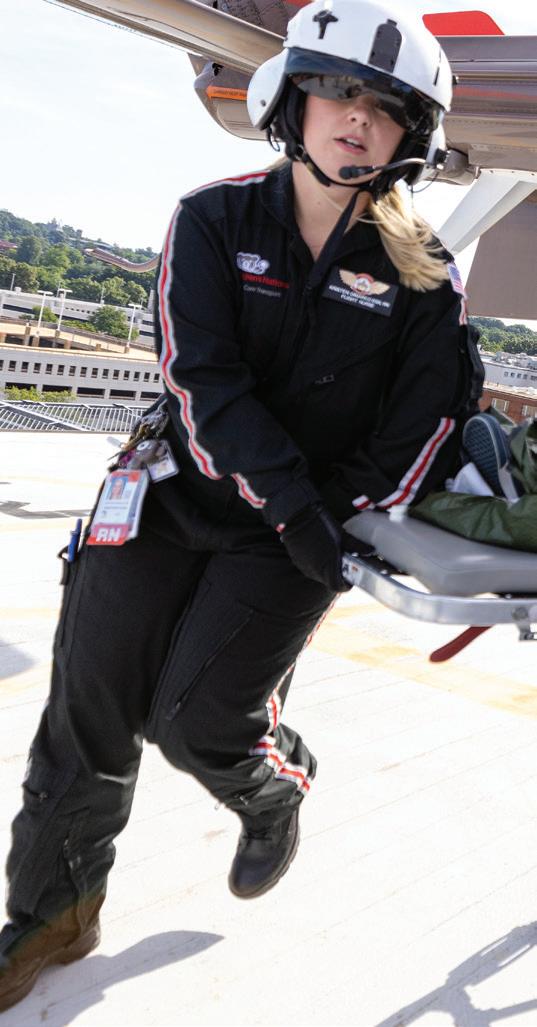



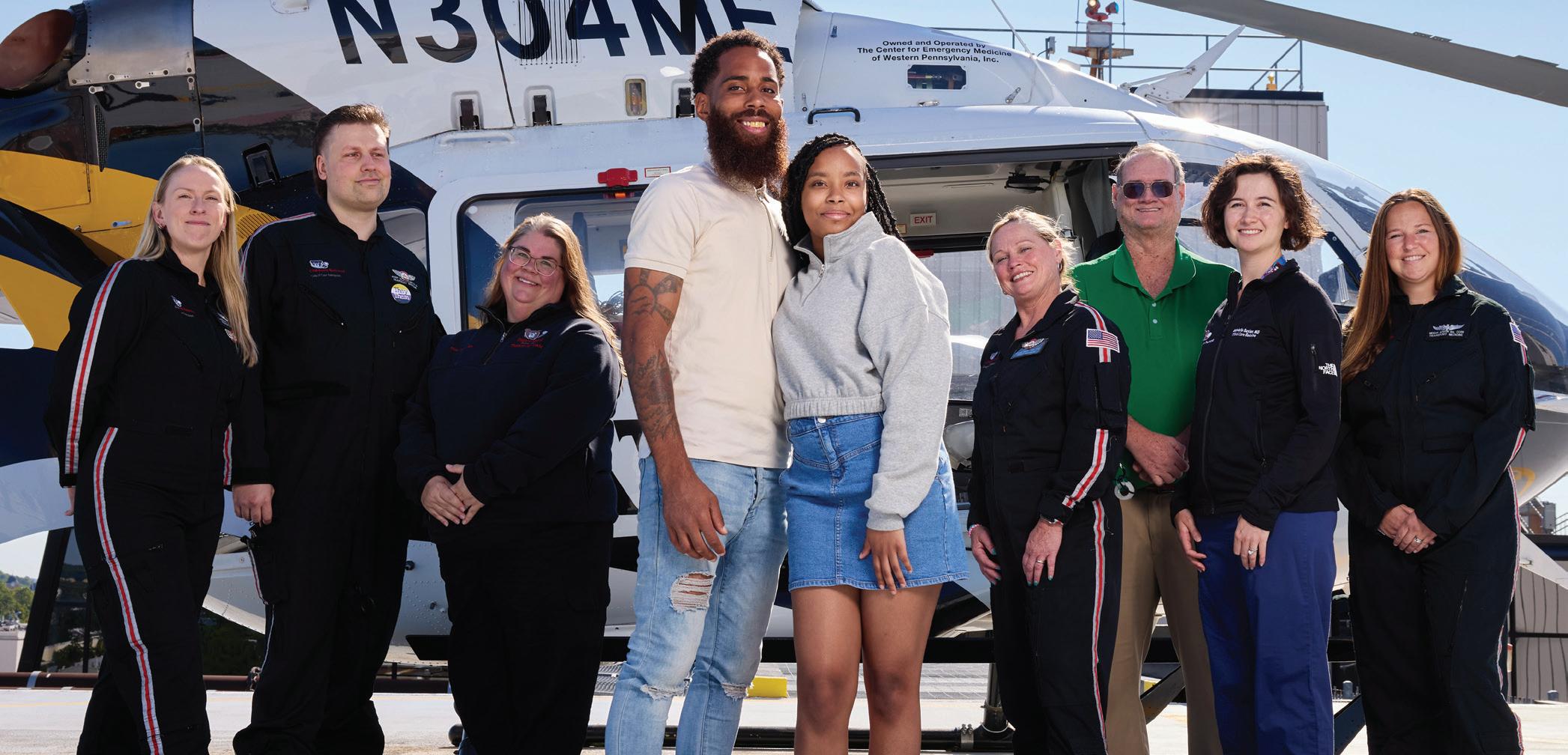
Children’s National is the only hospital in the Washington, D.C., metropolitan area with pediatric-only trained flight teams. Our Department of Transport Medicine extends the hospital’s reach by bringing critical care providers to the patient’s bedside at other hospitals, via ambulance or helicopter, to deliver highly specialized medical treatment.
Transport Medicine providers care for kids from moments after birth until their early 20s. Cases include stabilization and transport of critically ill premature babies and children with traumatic injuries, from broken bones and burns to severe injuries from major traumatic events. The team regularly encounters patients with difficulty breathing, heart failure and many other critical medical issues.
On a typical day, a flight nurse, flight paramedic and pilot staff a SkyBear transport case. When the patient needs additional support, a respiratory therapist or a pediatric intensive care physician may join.
Our Transport Medicine team has a single objective: to provide the safest, highest-quality stabilization and transport of patients to and from Children’s National. It serves all of Maryland, the District of Columbia and Northern Virginia, with frequent missions to West Virginia, North Carolina, Pennsylvania and beyond.
Multiple teams work in staggered shifts around the clock, ensuring that both ambulance and SkyBear transport are ready at a moment’s notice. Each member of the department’s leadership staff is a registered nurse or certified paramedic, so that even during the busiest times, the hospital always can put together a team.

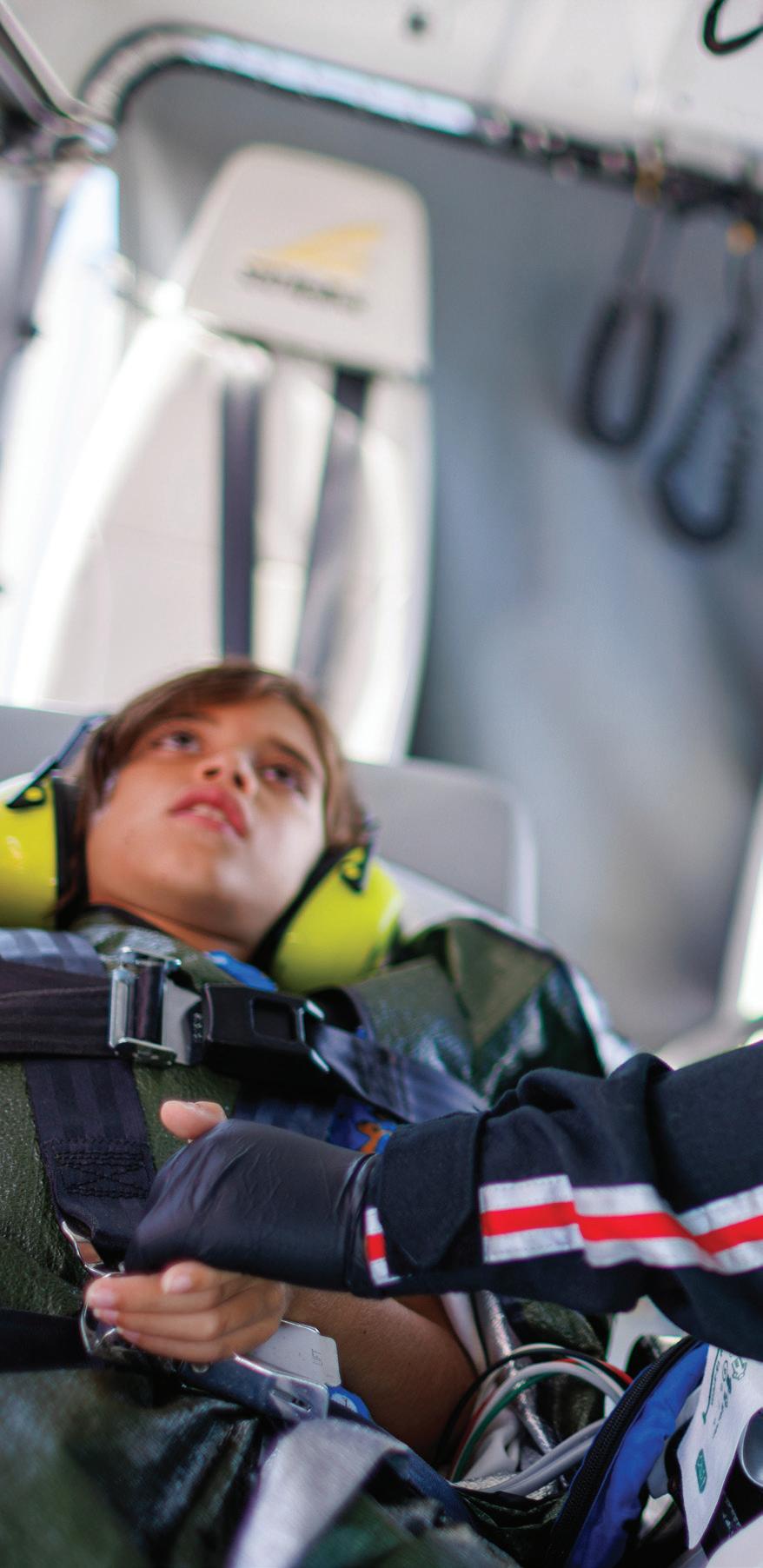
14, 2024
Howard answered the 1 a.m. call to our 24/7 telephone hotline.
Destyni was at a local hospital with abdominal pain. Care providers reported that she was stable, but out of concern that something serious may be occurring, they requested immediate transfer to Children’s National. At a call center on our hospital’s 6th floor, Howard worked with Erin Dillon, RN, the shift intake nurse, to gather clinical information and assess the situation. Dillon has been a transport nurse at Children’s National for nearly 20 years. With all available information in hand, Howard dispatched an ambulance for Destyni. Paramedic Josh Milburn and Katelynn Highsmith, RN, were on their way.


KEVIN HOWARD Transfer Coordination Specialist
Howard has worked in our Emergency Communication and Information Center for 37 years. He answers calls for help and coordinates transportation and care for babies and children to and from Children’s National. He collects and disseminates vital medical information and strategically communicates to save lives.
His superpowers? People skills, masterful multitasking abilities and a reputation for calm in situations that are almost always stressful. Once, during a snowstorm, Howard successfully convinced the Maryland Department of Transportation to provide a snowplow escort. It cleared the way so that our ground transport team could get a child with a ruptured appendix two hours away in St. Mary’s County and bring them to Children’s National.
Howard also coordinates delicate ground and air transport of donated organs for the hospital’s transplant teams. “Every minute we’re dealing with children’s lives and outside professionals looking for help to treat the children in front of them. We operate like a family. There’s no team I’d rather be a part of,” he says.
When the Children’s National ground crew got to the local hospital and assessed Destyni’s condition, they found it to be more severe than expected.
“The tone got much more serious,” says Darrell. “One of the ambulance crew said, ‘No, this isn’t right.’”
Destyni was lethargic and pale. Back at Children’s National, Howard stayed in touch with the ambulance crew and initially reached out to the oncall doctor in our Pediatric Intensive Care Unit (PICU). The estimate for the ambulance to deliver Destyni to our main hospital campus was 25 minutes.
She appeared to have a heart block, a serious cardiac condition in which electrical signals in the upper and lower chambers are unable to
synchronize with each other. The attending physician at Children’s National agreed that Destyni’s condition was critical and transport to our Cardiac ICU was urgent.
The risk of a delay was too great. While our ambulance crew worked at the local hospital to improve Destyni’s slowing heart rate and low blood pressure, Howard dispatched SkyBear to bring her to our Cardiac ICU as soon as possible. The helicopter would take only three to five minutes of travel each way, dramatically reducing the risk for Destyni.
“They explained that Destyni’s heart was barely beating and that the helicopter had to come. The rest was a blur,” Darrell recalls.
Smith and flight nurse Megan Boutin, RN, had just returned to Children’s National from an earlier SkyBear flight. Howard alerted them that they would need to do a quick turnaround for another emergency.
They were still in their black and red flight suits. They restocked their flight bags with the emergency medicines and supplies they might need. Transport Medicine teams carry specialized pediatric equipment, such as child-sized blood pressure cuffs, IV catheters and protective face masks so that they are ready to care for everyone, whether the patient is a 2-pound baby, teenager or young adult. Smith and Boutin huddled for a briefing about Destyni’s situation, got back in the helicopter and buckled their helmets and seatbelts.
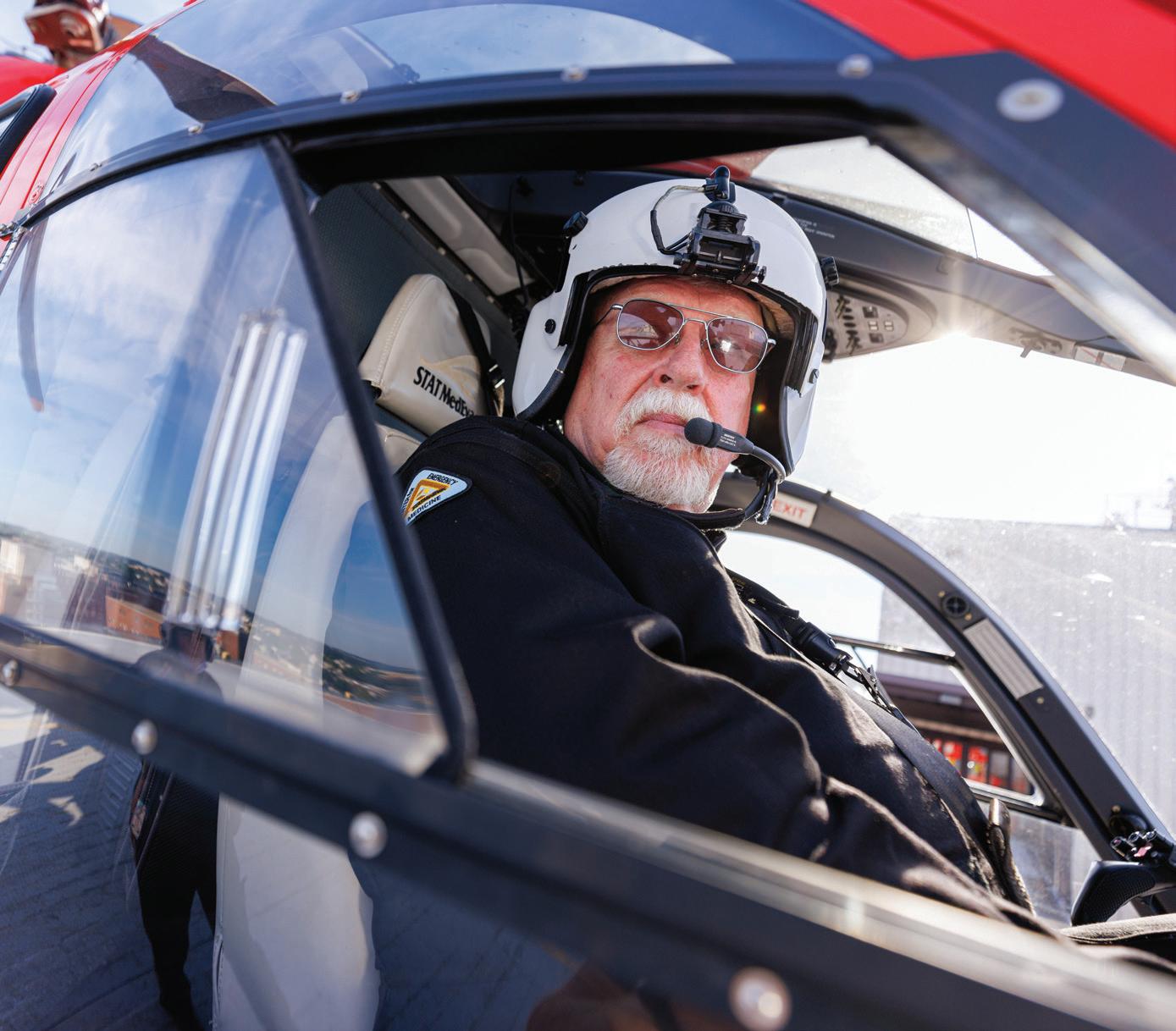
It’s a high-stress job. Focusing on our safety protocols every time we lift and land ensures that we’re prepared for whatever we’re heading into, to make sure we keep our patients and ourselves safe.”
― Megan Boutin, RN
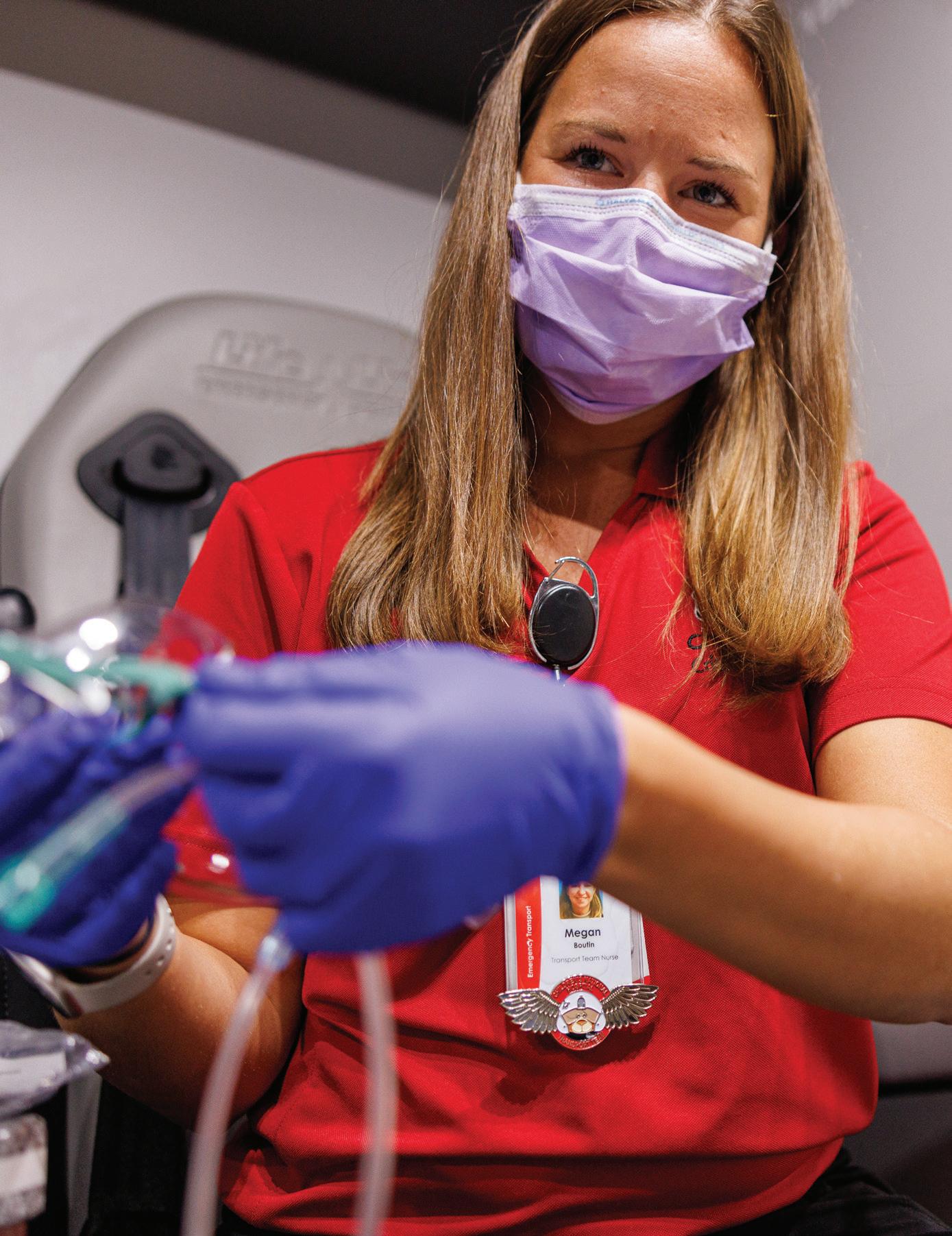
Gabrielle Baylon, MD, was the PICU fellow on call that evening. She was busy mentoring first-year fellows when she heard from Howard about Destyni, under care with an ambulance crew. Dr. Baylon consulted with the attending physician in our Cardiac ICU. “They were equally concerned about the risk of the patient going into cardiac arrest and felt I should go with the helicopter team,” she says.
Dr. Baylon immediately called our communications center and asked them to hold the helicopter. She headed to the staff elevator. She donned a flight suit and found a helmet that fit. As the sliding doors parted, she stepped onto the rooftop helipad, where the bright red helicopter waited against the night skyline of the nation’s capital.
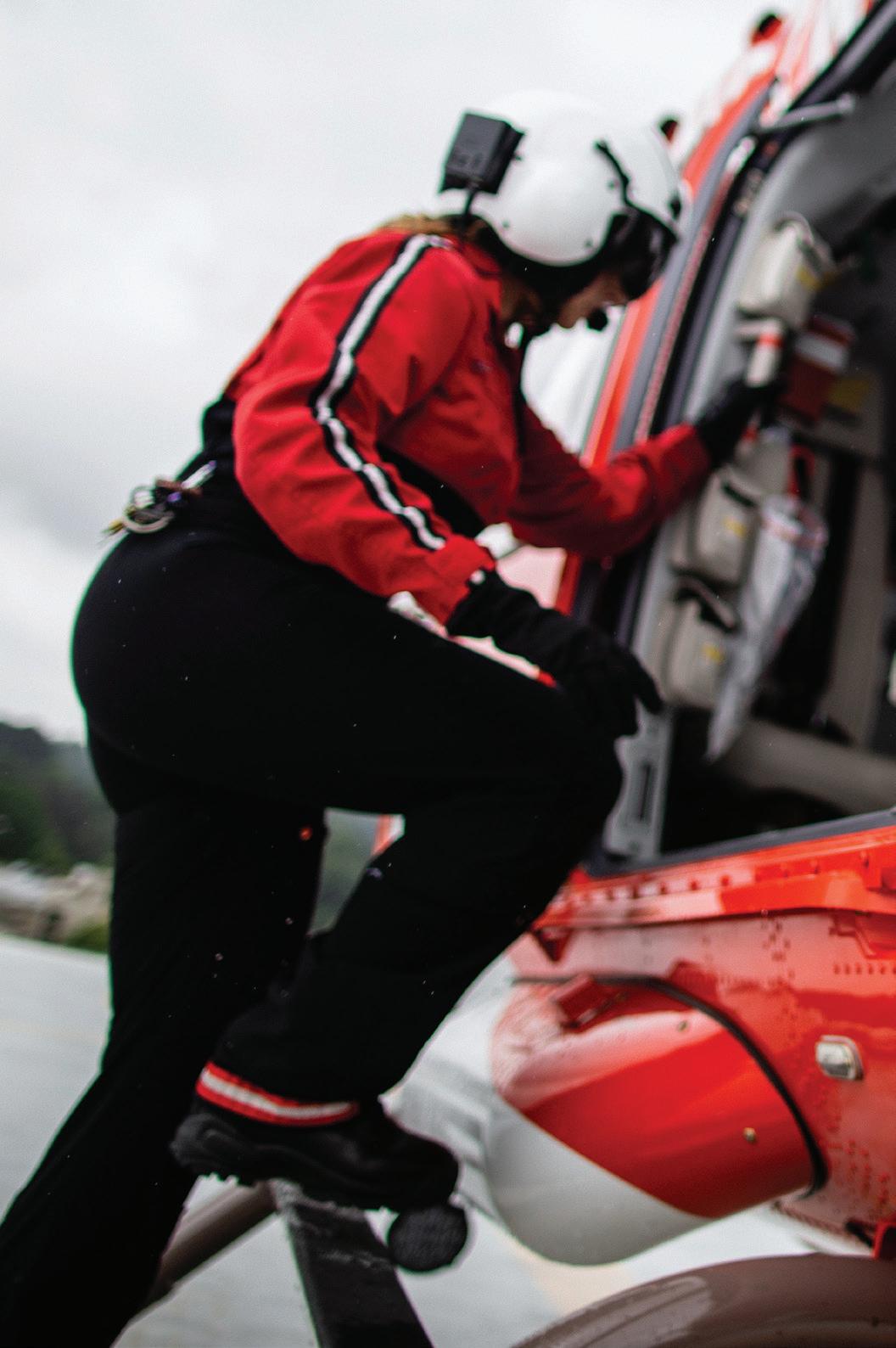
As soon as team members secured themselves in the helicopter, air traffic control cleared SkyBear for takeoff from Children’s National. The thump-thump of the rotor blades filled the air. They lifted off into the dark, banking south. Michigan Avenue receded into a thin ribbon of headlights hundreds of feet below.
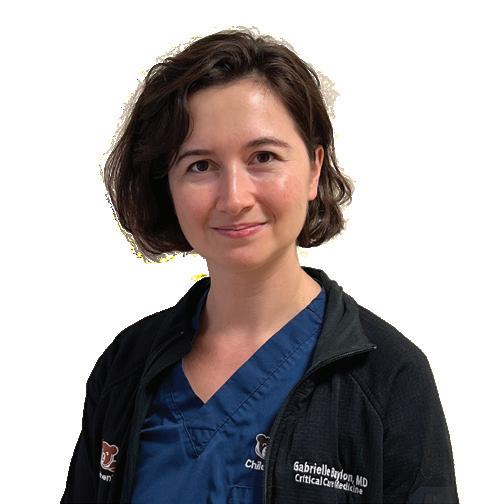
As a child, Dr. Baylon loved puzzles, knitting and sewing. She made a regular practice of taking her bicycle apart and putting it back together to understand how it worked. In high school, she discovered biology. “My childhood instilled in me the predecessors of critical care,” she says. These include the ability to persevere to finish a difficult task, find calm amid a complicated procedure, work with her hands, ponder different angles of a problem, pay attention to details and find solutions.
“There’s an intense camaraderie among our critical care teams the fellows, residents, nurses and attending doctors and the Transport Medicine teams that I have never felt anywhere else,” Dr. Baylon says. “Those incredible bonds and the respect and teamwork that save lives are what keep me coming back to work every day.”
About three minutes later, SkyBear landed, and Dr. Baylon, along with flight crew Smith and Boutin, joined the ambulance crew at Destyni’s bedside. They introduced themselves to her family and hospital staff, amid a din of beeping machines. Destyni was restless. Her heart rate was alarmingly low, and she needed to get to the Cardiac ICU right away.
The team checked her vital signs and set up a mobile defibrillator to monitor her heart during the short return flight. Dr. Baylon explained to Destyni’s father the urgent situation and immediate care plan for her. Highsmith, the nurse from the ambulance crew, joined the flight team to ensure continuity of care.
I’m deeply proud of our transport team. We have the resources we need in place ― including our command center, dispatch team, intake nurse and, in this case, the cardiologist ― to take the best possible care of the patient. That’s an awesome feeling.”
― Josh Milburn
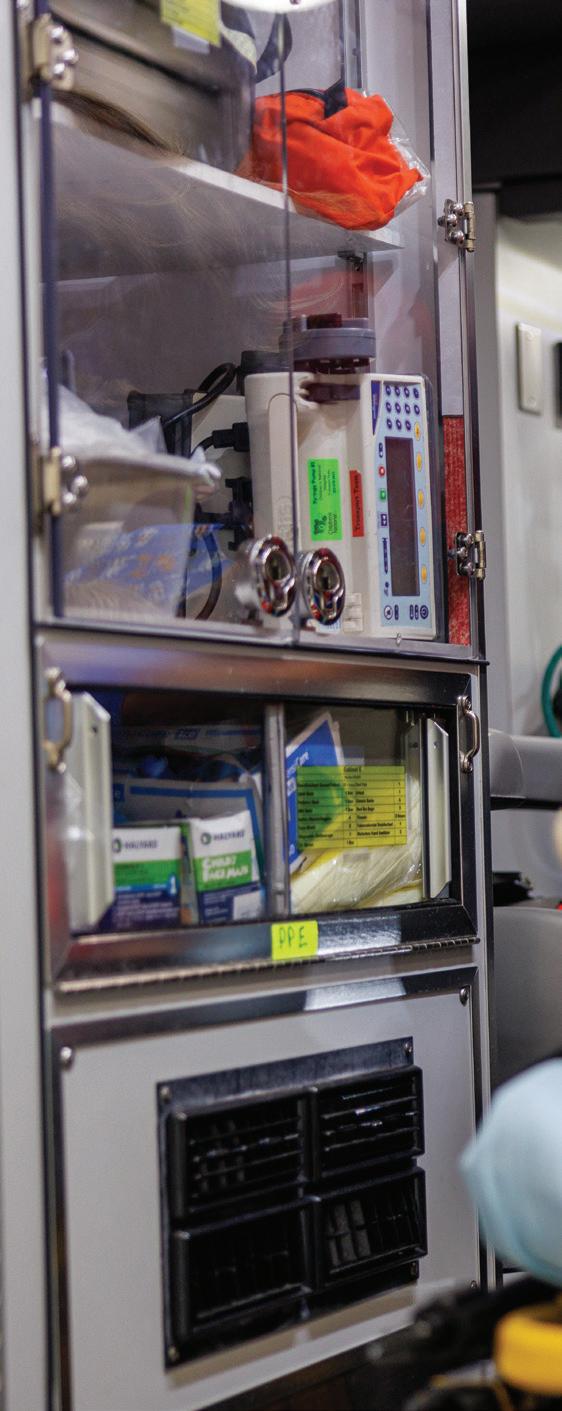
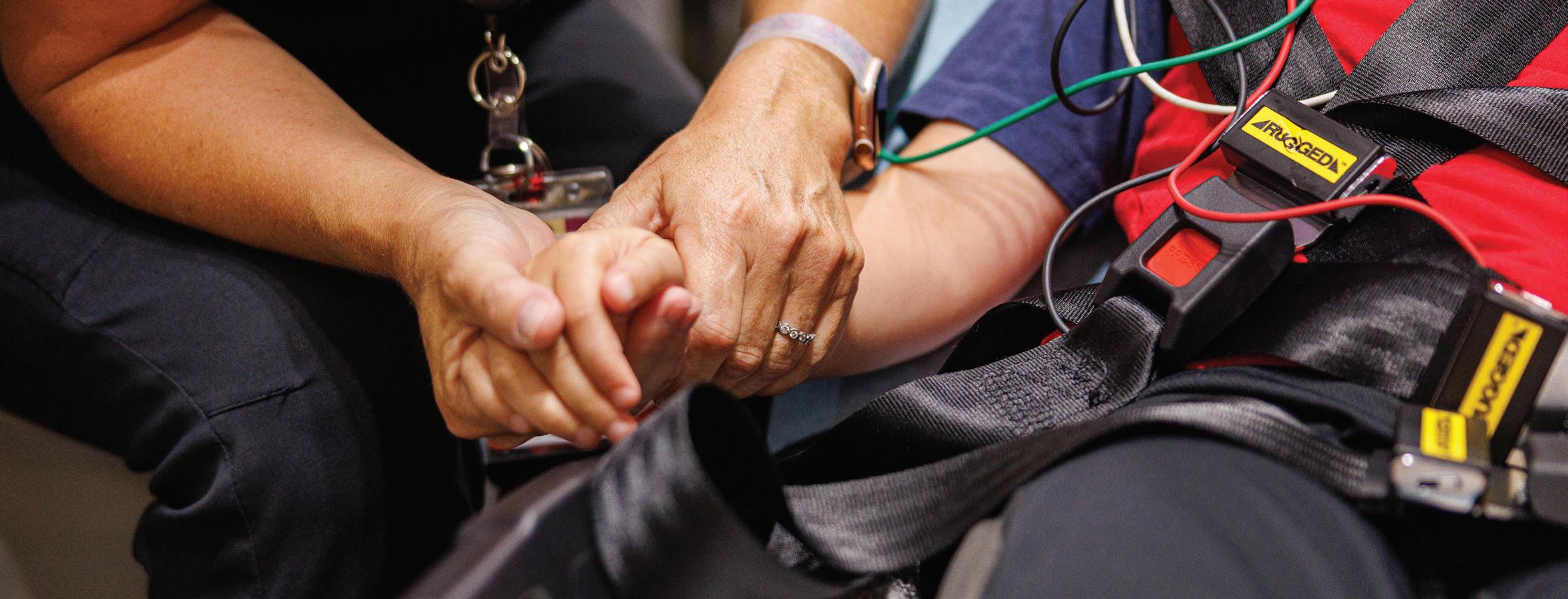

After a concise conversation and quick collaboration, the SkyBear team was ready to bring Destyni to Children’s National. Our Cardiac ICU staff, in constant contact, was ready to receive her. “When we were sure Destyni was stable, we wrapped her up, strapped her in and flew back as fast as we could,” says Dr. Baylon.
“The transport team saved my baby’s life,” says Darrell. “I will never forget their professionalism and precise teamwork. Even when I thought I might be in the way, trying to hold her hand or talk to her, they worked adeptly around me, getting her ready to fly.”
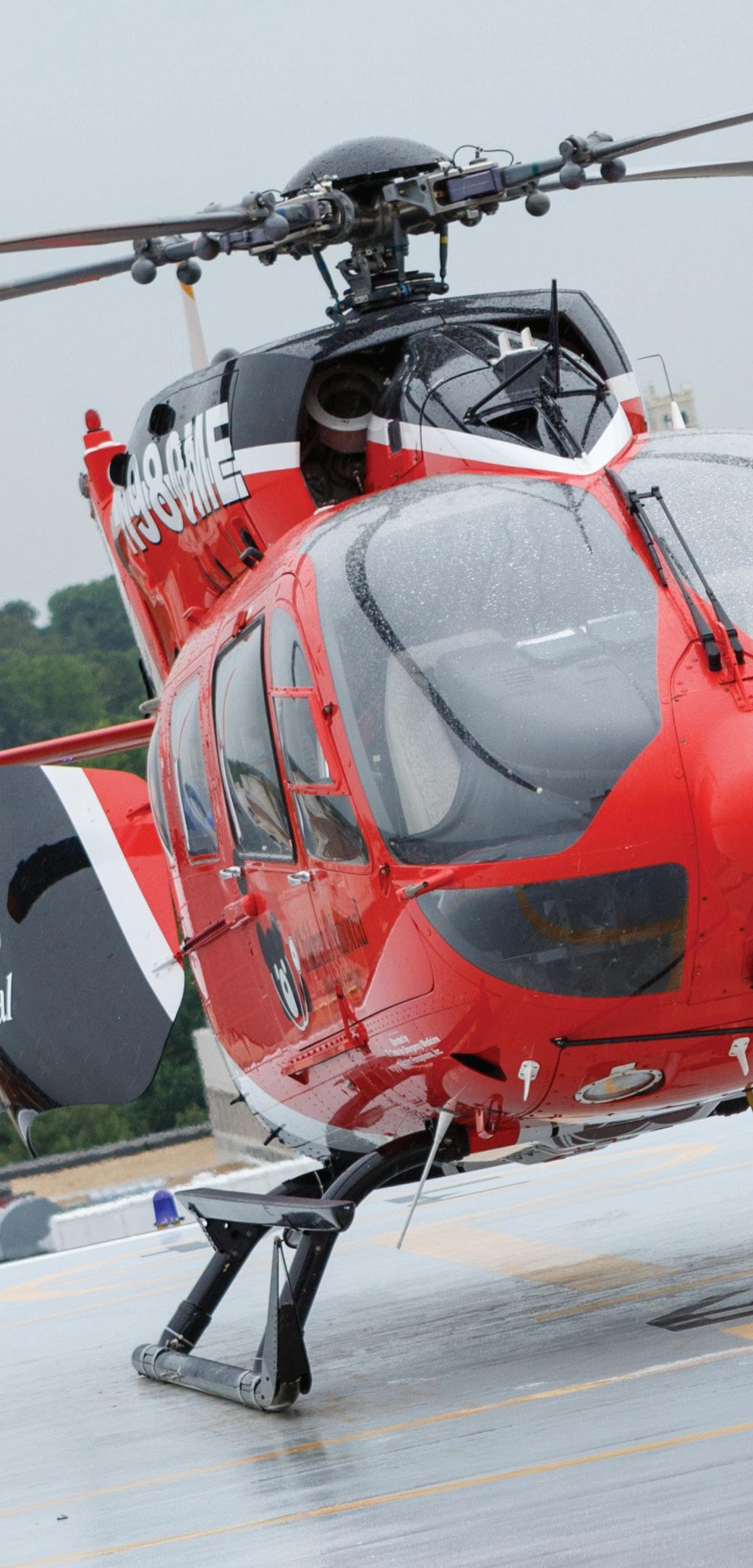
Out of the helicopter, the team rolled fast, delivering Destyni from the landing pad through the vestibule and down the elevator to the hospital’s 3rd floor, monitoring her all the way.
Destyni’s Cardiac ICU team, including fellow Brittany Badesch, MD, had the room set up with the medications and equipment she would need, including the extracorporeal membrane oxygenation (ECMO) machine, which would provide life support. That team took over Destyni’s care within 10 minutes after touchdown. “They settled her into an ICU bed and intubated her in short order,” Dr. Baylon says.
Cardiac ICU physicians diagnosed Destyni with myocarditis, or heart inflammation, caused by a virus. Her care team placed her in an induced coma that would last for two weeks to let her heart rest while they treated her.
“The hospital team explained everything to help me understand,” Darrell recalls. “I was terrified, and they took care of me too. Whatever I needed, someone was there with a glass of water, a blanket or an answer to a question. Most important, they truly took care of Destyni.”

Nurses on our Transport Medicine team rotate in three different roles for intake, flight and ground transport. A team of neonatal nurses joins when newborns need critical care.

22
23
6,000
The team transports about about half are critical care patients and about
12
10 communication specialists paramedics newborns and children every year arrive via SkyBear nurses administrative and education staff
900
Destyni woke up surrounded by plush stuffed animals and a soft blanket that nurses had arranged on her bed. “That made me feel safe and warm,” she says. “When I awoke, I still felt tired but better. The nurses and even my physical therapists kept me laughing as I recovered. My dad was very appreciative and emotional about it.”
She finally left the hospital after nearly a month. At home, she wore a defibrillator vest that monitored her heart and sent hourly reports to her hospital care team for the months that followed.
“The staff at Children’s National, including the transport team, made it possible for me to go home with a healthy daughter,” says Darrell. “I never imagined something like this would happen. When it did, it felt like it would never end.”
Darrell says now he and Destyni are happy to return to the hospital for check-ups: “They shine love on her when she walks back in as her regular self ― full of light. This is amazing to me and the best feeling ever.”



Two pediatric leaders step down from Children’s National in December after long and distinguished careers in critical care medicine and nursing. We spoke with each of them about their legacies, along with the defining moments that meant the most for them and the children they cared for.
Executive Vice President, Chief Clinical Officer, Physician-in-Chief, IKARIA Distinguished Professor of Critical Care Medicine
As a pioneering leader at Children’s National for nearly two decades, Dr. David Wessel cared for some of the sickest children in the world and helped fellow doctors do the same. We asked him about his achievements and the challenges and rewards of pediatric medicine.
What first inspired you to pursue medicine ― and why pediatrics?
In high school, I loved physics and understanding how things move and flow. I spent my summers working in a lab on nuclear reactors. But I realized I was more of a people person. When I studied physiologic sciences at Oxford University, I found a way to apply the physics I loved to the human body and realized medicine was my path. One of my professors told me something that shaped my whole career. He said, “If you help an adult, you give them more time. If you help a child, you give them a lifetime.” That stuck with me.


Early in your career, you helped create something new called cardiac intensive care. Tell us about that.
It’s a specialized kind of care for children with very serious heart problems. Years ago, there weren’t teams focused solely on those patients. People didn’t think hospitals needed a dedicated Cardiac ICU. But I believed kids deserved this. I trained in cardiology, anesthesiology and critical care to build trust across disciplines. Over time, we built Cardiac ICUs and trained the first generation of specialists. Now, hospitals worldwide have them, and patients get better care because of it. Many doctors I trained now lead top programs in cities like London and Shanghai. We also started the first professional society for the field.
You also helped lead big changes at Children’s National. What stands out?
When I arrived 20 years ago, different teams were working hard but not always in sync. Over time, we strengthened connections across specialties, with hospitals in our region and within our own teams. Even as birth rates were going down, we grew our Neonatal Intensive Care Unit (NICU) by building strong referral partnerships. Whether in critical care, neonatology or cardiology, we created a culture where people feel supported. As a leader, I also prioritized incorporating clinical research into our Centers of Excellence, enhancing patient outcomes.
What about new treatments? You’re known for pioneering medical breakthroughs.
One of the biggest was using a gas called nitric oxide to help babies with breathing problems. People were skeptical, but we showed it could safely lower pressure in the lungs without affecting blood pressure. We saw babies get better before our eyes. Later, we found a way to use a medication called sildenafil to transition off nitric oxide. Today, these therapies are standard care and make a big difference for survival. It shows how persistence, good science and a little courage can lead to real breakthroughs.
What role do donors play in making this work possible?
Donors are vital. A good example is the Board of Visitors Telehealth Command Center in the Cardiac ICU. For years I’d imagined a system with video-monitoring and smart technology to help spot problems early and keep our most fragile patients safe. It took generous gifts from several supporters to make it real. Now it’s the first center like it in the world, helping to predict and reduce serious events like cardiac arrest. Donors help us turn big ideas into better care faster, including entirely new ways of delivering it.
Are there particular times you cared for patients that stay with you?
There are many. One I’ll never forget is a boy with a failing heart. We used a heart-lung machine called ECMO to keep him alive. When he got worse, we did something we had never done before in that setting ― we used the machine a second time for the same patient. And he made it. His hometown threw a parade
when he came home. Every year for 25 years, he sent me a card on Father’s Day. That’s what this work is about, seeing a child live the life you fought to protect.
There are always challenges in medicine. What is one that is still hard today?
Making sure our doctors and nurses feel supported, especially with all the financial pressures in healthcare. Balancing resources while still pushing forward with innovation isn’t easy, but it’s worth it. When we care for our teams, they give their best to every child.
What has helped you keep going through tough moments?
In critical care, you see things happen in front of you. You stay up all night helping a child, and the next day, they’re stronger. That keeps you going. And when a child returns weeks later with their family just to say thank you ― that moment stays with you.
Any parting messages about Children’s National and to your colleagues here?
Our doctors, nurses and teams truly care about each other and the kids. We built a system where providers of care have a voice in leading it. That’s rare. And being in Washington, D.C., means we can advocate for kids everywhere. We often say we’re “the nation’s children’s hospital,” and we mean it. To my colleagues: Working with you has been one of the greatest joys of my career. Thank you for your heart, your talent and the difference you make every day.
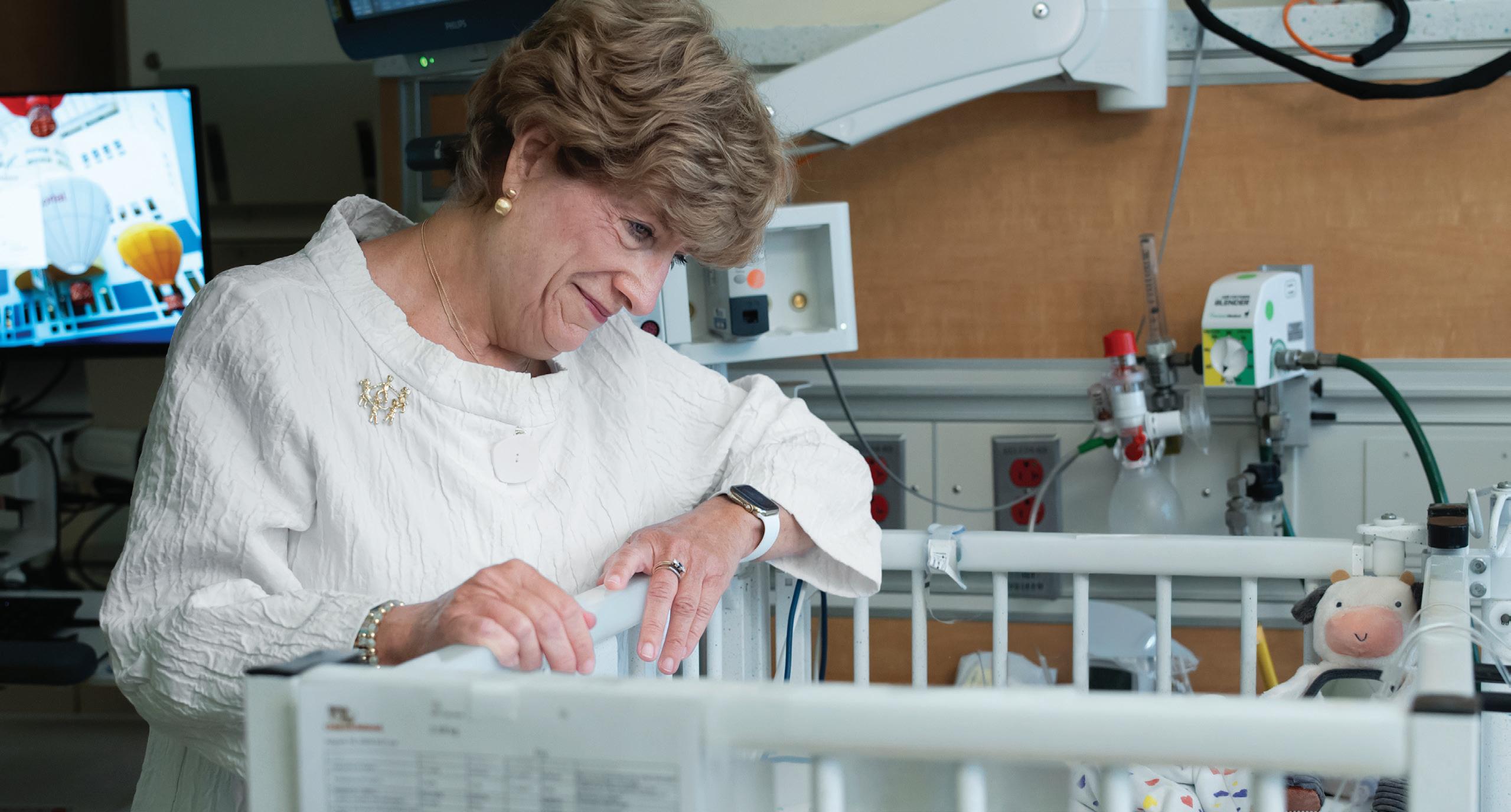
MS, RN, NE-BC, FAAN
Senior Vice President and Chief Nursing Officer
Ask a nurse at Children’s National what sets their work apart, and you likely will hear a simple but powerful belief: “Only in pediatrics can you save a lifetime.” This phrase strikes a chord with the hospital’s more than 2,000 nurses.
The statement represents a deep commitment for Linda Talley, who retires as senior vice president and chief nursing officer at the end of 2025. Her team registered it as a trademark to encapsulate their unique calling to help children grow up stronger.
Only in pediatrics can you save a lifetime
Our nurses are leading and transforming the professional practice of nursing through advances in care delivery, evidence-based practice, collaborative partnerships and innovation,” Talley says.
She concludes her 37-year career at Children’s National at the helm of a robust and growing nursing staff. In 2025, the hospital onboarded more than 170 nurses, restoring its workforce to its pre-pandemic staffing level. This represents a substantial accomplishment amid a nationwide nursing shortage.
Talley sees a bright future for the profession, particularly at Children’s National. In an era of uncertainty, she has seen nurses overcome unprecedented challenges time and again. She witnessed them respond in the moment on Sept. 11 and rise to the occasion during infectious disease outbreaks, most recently COVID-19.
The pandemic led to elevated rates of stress and burnout among nurses. Talley credits her

team for remaining grounded in its purpose. “What matters is courage, commitment and caring,” she says. “Nurses embrace responsibility for children and families.”
Talley did not always see herself becoming a nurse. She grew up in Richmond, Virginia, the daughter of a thoracic surgeon and a nurse. She did administrative jobs at her father’s hospital as a teenager. Later, she had the opportunity to shadow her mother’s nursing practice. Initially, Talley rebelled against her parents’ career paths. “I resisted what was in my DNA,” she says.
She attended Salem College with the hope of becoming a social worker. A job with scientists at a head injury laboratory made her realize that she yearned to care for patients at the bedside. She transferred to nursing school at Virginia Commonwealth University.
Talley attended a career fair at Children’s National shortly after earning her bachelor’s degree. A nurse offered her a tour of the NICU. “I connected with the hands-on, fast-paced environment,” Talley
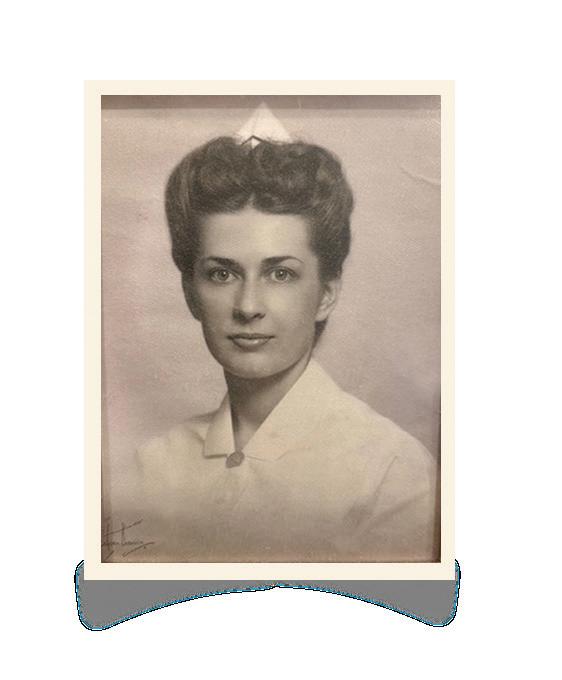
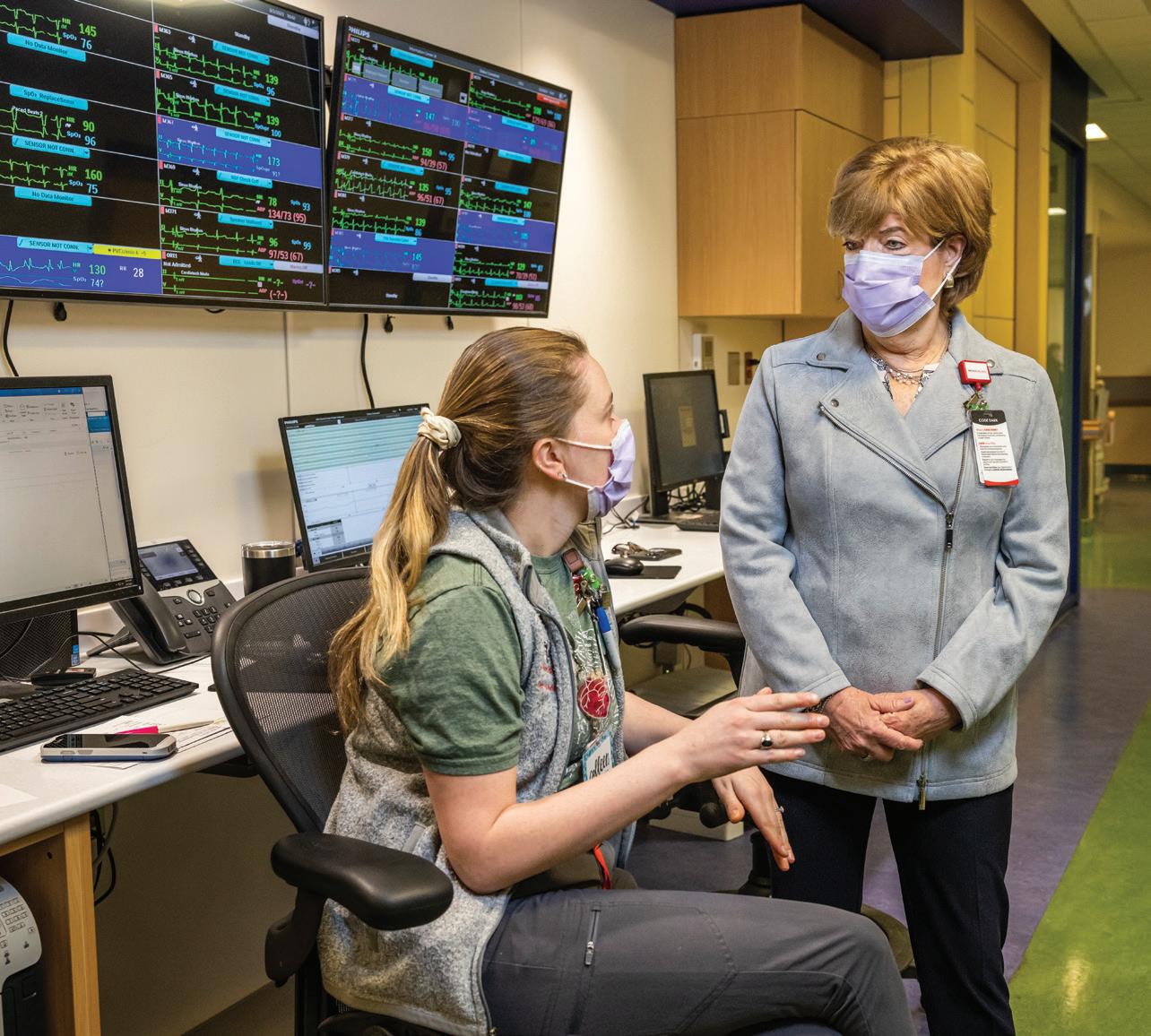
says. “The nurses had an intense focus on health and well-being, not just of the infants but of the patient’s entire family.” She left the job fair with a tentative offer to join the NICU team. She accepted and never looked back.
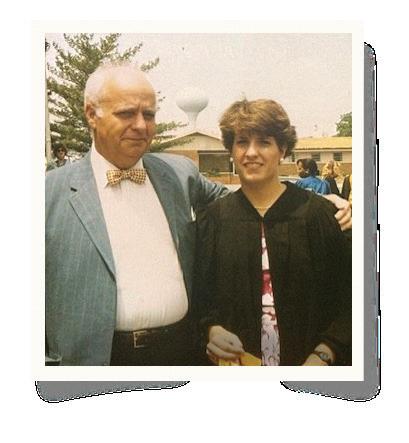
Our nurses are leading and transforming the professional practice of nursing through advances in care delivery, evidence-based practice, collaborative partnerships and innovation.”
― Linda Talley
“Linda always stepped up when there was a need,” says Nellie Robinson, RN, MSN, FAAN, Talley’s predecessor as chief nursing officer. For Robinson, Talley stood out for her clinical expertise and pragmatic approach to innovative ideas as she rose through the ranks. She credits Talley, who became chief nursing officer in 2013, for playing an integral role in building a world-class team.

Talley’s tenure coincides with the hospital’s consistent national acclaim. The American Nurses Credentialing Center, since 2010, has recognized Children’s National with Magnet® designation, nursing’s highest honor. Less than 10% of nursing programs achieve this distinction. Few hospitals ever earn more than three consecutive four-year designations.
Talley considers her team’s rare streak of four in a row its most outstanding achievement. It signals excellence in patient satisfaction, better care outcomes and high levels of personal fulfillment among nurses.
Children’s National also strengthened its leadership in nurse-led research and nursing workforce innovation under Talley’s guidance. Philanthropy from Bill Conway Jr. and his late wife, Joanne Barkett Conway,

helped fuel these programs. The Conway family joined dozens of hospital nurses to create the William and Joanne Conway Chair of Nursing Research. Pamela S. Hinds, RN, PhD, FAAN, a renowned nurse-scientist, held this position until the end of 2024.
The family also launched the Conway Nursing Pathway Program, which provides tuition support to nursing students and provides hands-on work experiences alongside seasoned nurse mentors. To date, under the direction of Mourine Evans, RN, MS, the program has welcomed 77 Pathfinder students and advanced the careers of 48 mentors. It has launched the promising careers
of 47 nurses at Children’s National. Their efforts will benefit patients and families for decades to come.
Talley departs Children’s National with plans to remain an active thought leader in the field, when she’s not relaxing with her family in Virginia Beach. She knows that her legacy at the hospital will continue.
“Children’s National nurses draw strength from the knowledge that we improve the lives of young patients and their families. Each of us can measure our impact in lifetimes. It feels like a gift.”
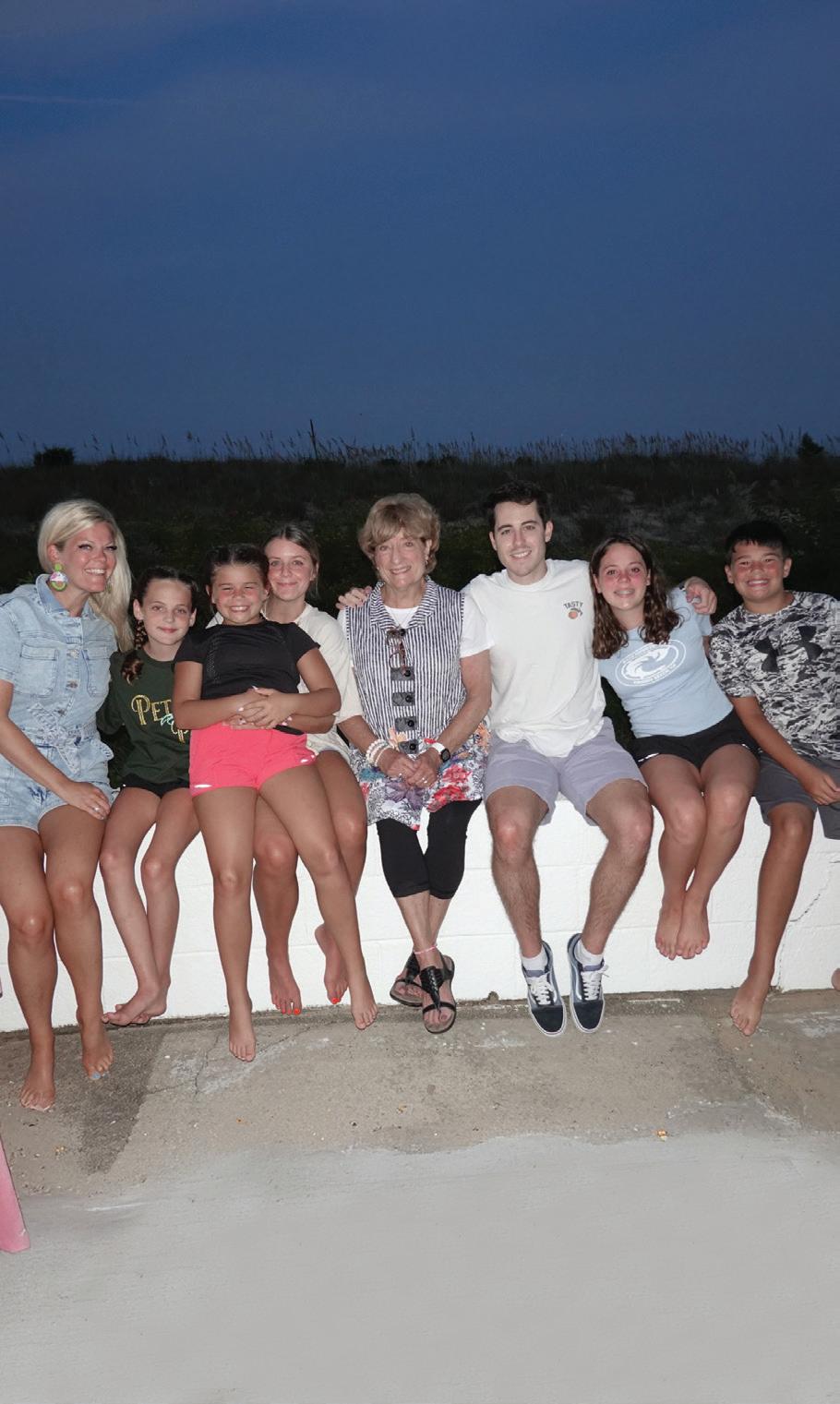
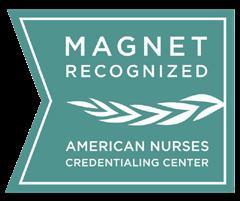
The American Nurses Credentialing Center, since 2010, has recognized Children’s National with Magnet® designation, nursing’s highest honor.
The speed of change within the nursing profession is unprecedented. The Conway Nursing Pathway Program helps us stay nimble and engage with the dynamic changes we face.”
― Linda Talley

The journey began with a 105-degree fever. A. James “Jim” and Alice Clark rushed their 3-year-old son Brad to Children’s National. Doctors treated him for spinal meningitis, saving his life. That day in 1955, the care team had no way of knowing that the Clarks would go on to influence almost every aspect of Children’s National, improve children’s health across the capital region and set the stage for a pediatric research revolution.
If anyone envisioned that future,

it was Jim Clark. He became a builder of historic proportions, nicknamed “the king of concrete.” His company ― known as Clark Construction since 1996 ― built large sections of contemporary Washington, D.C. Its achievements include 28 Metro stations, the World Bank headquarters and Nationals Park. One project held special meaning for Jim and Alice: their city’s children’s hospital. Jim oversaw construction of the modern-day medical campus on Michigan Avenue. In 1977,

President Jimmy Carter dedicated it, saying he believed it would “set a standard for the whole country.” The president’s prediction came true, thanks in part to the Clark family’s visionary philanthropy.
“Our family realized how fortunate we were to have this wonderful place right here in our backyard,” Jim’s daughter, Courtney Clark Pastrick, says. Courtney and her two brothers grew up in Bethesda. “My parents believed in building relationships of trust.”


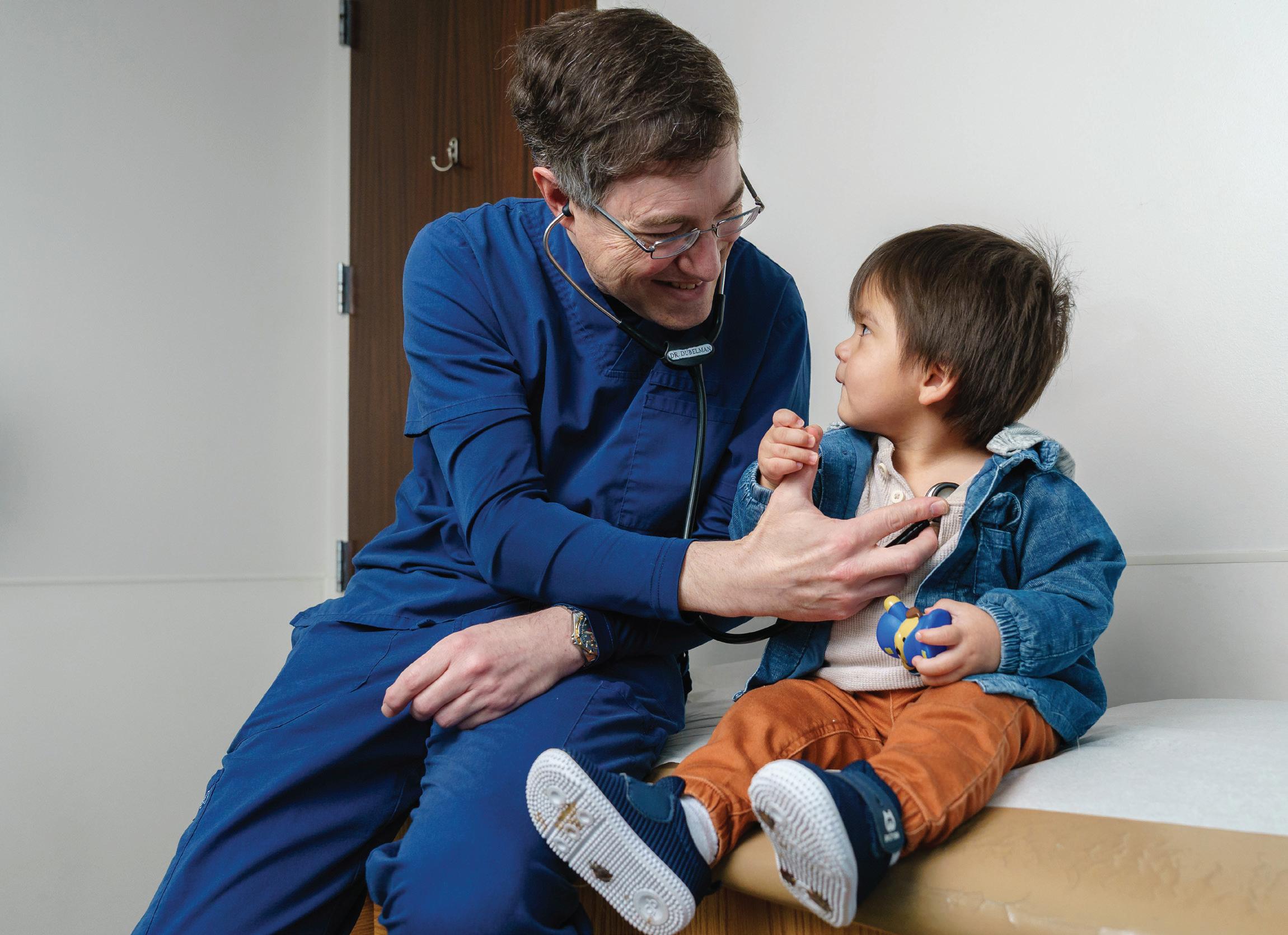

Our family realized how fortunate we were to have this wonderful place right here in our backyard.”
― Courtney Clark Pastrick
Dr.
The Clarks built their philanthropic support of Children’s National on partnership and innovation. The A. James & Alice B. Clark Foundation’s first transformational gift in 1999 reflected an ambitious vision for a new era of medicine. It created the A. James Clark Distinguished Professorship in Molecular Genetics, one of the hospital’s first endowed chairs. The investment came just in time to harness the scientific revolution unleashed by the first map of the human genome.
“For 25 years, the Clark Distinguished Professorship

has been a driving force behind our mission to transform children’s health through molecular discoveries,” says Nathan Kuppermann, MD, MPH, executive vice president, chief academic officer, director of the Children’s National Research Institute and Fight For Children Distinguished Chair of Academic Medicine.
With this endowed position, the hospital will recruit a new leader for its Center for Precision Medicine and Genomics Research, formerly the Center for Genetic Medicine Research. “Our next Clark Distinguished Professor will lead us into a new era of care,” Dr. Kuppermann says. “Precise, personalized treatments will give every child the best chance at a healthy future.”
When Logan was 9, he almost died from cardiac arrest on Christmas Day. He struggled with learning challenges and behavioral problems, including disruption in school. Everything changed, however, when Logan transferred to Children’s National for intensive care following his health crisis. Seth Berger, MD, PhD, a medical geneticist, looked into Logan’s case.
The result was night and day. I am so grateful to have Dr. Berger and Dr. Sherwin in our lives. I am a believer in the future of genetic medicine. We are beyond lucky.”
Dr. Berger uses sophisticated biochemical, genomic and artificial intelligence tools, including RNA sequencing, to solve medical puzzles. The Clark Foundation’s investments helped build this platform. Fortunately for Logan, Dr. Berger discovered a rare and harmful mutation in the SLC6A8 gene, which helps the body’s cells store and use energy through a substance called creatine. Logan’s rare metabolic condition is one of only 300 known cases in medical history. A treatment existed.
― Melissa, Logan’s mom
Logan began taking a mixture of creatine, arginine and glycine under the care of
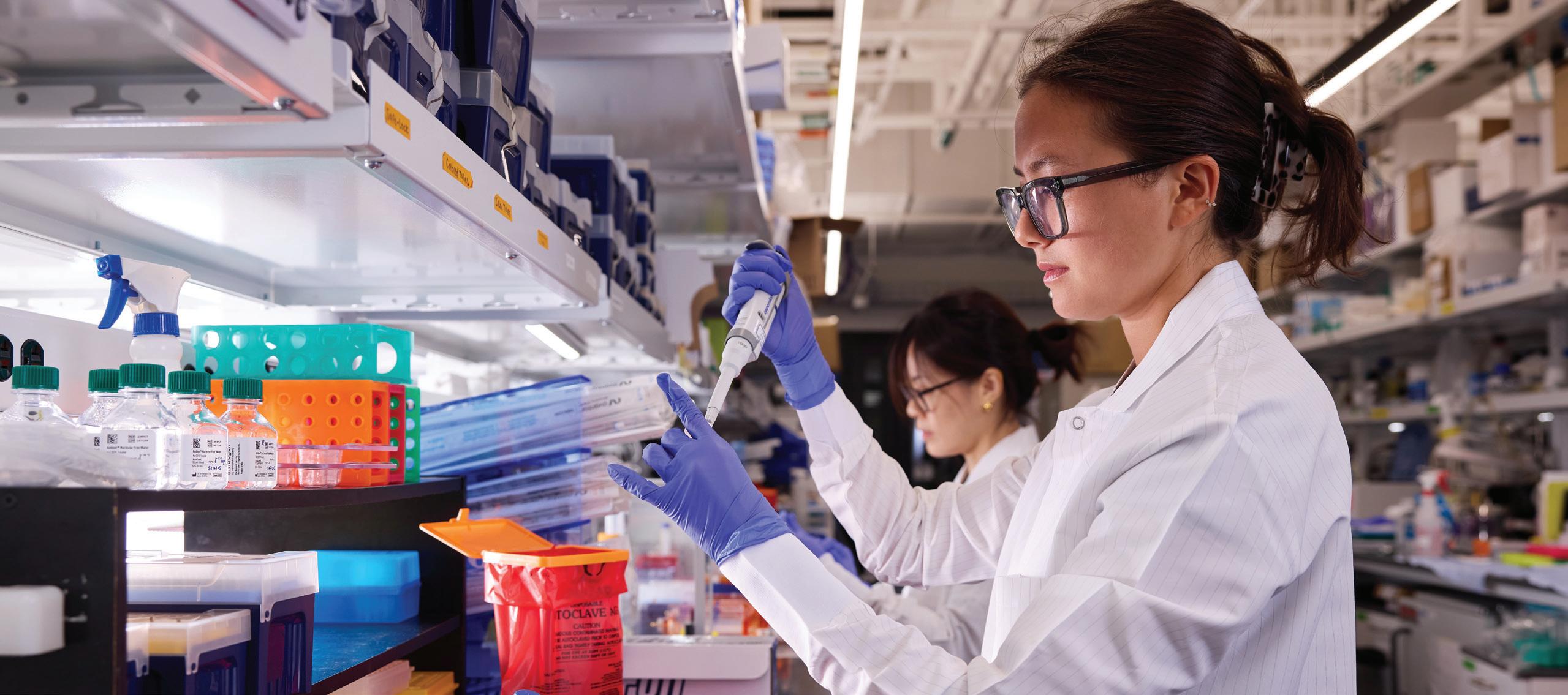
Dr. Berger and Elizabeth Sherwin, MD, a cardiologist and expert in heart rhythm disorders. His health stabilized, and he finally could enjoy school activities. “The result was night and day,” Melissa, Logan’s mom, says. “I am so grateful to have Dr. Berger and Dr. Sherwin in our lives. I am a believer in the future of genetic medicine. We are beyond lucky.”
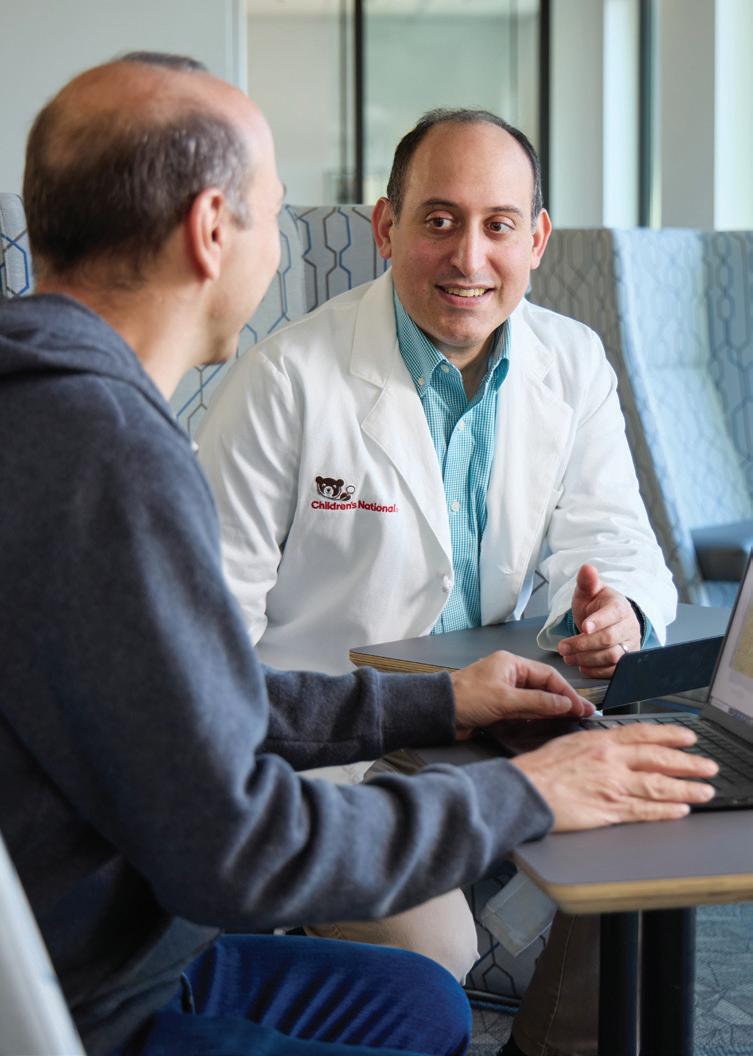
Strategic bets with long-term payoffs are a hallmark of the Clark family’s giving. “The Clark Foundation often thinks about philanthropy as risk capital,” Joe Del Guercio, the president and CEO, says. “We want to make investments in cutting-edge research and new ideas with the potential for maximum impact.” The foundation decided
to make those investments up front, rather than over decades, to maximize impact. It closes its doors on the last day of 2025 with an indelible legacy: $1.4 billion invested in more than 400 organizations, with a strong focus on strengthening people and families in the Washington, D.C., area. It invested in the University of Maryland, Jim’s alma mater and home to the Clark School of Engineering. After his passing in 2015, the university honored him by building A. James Clark Hall.
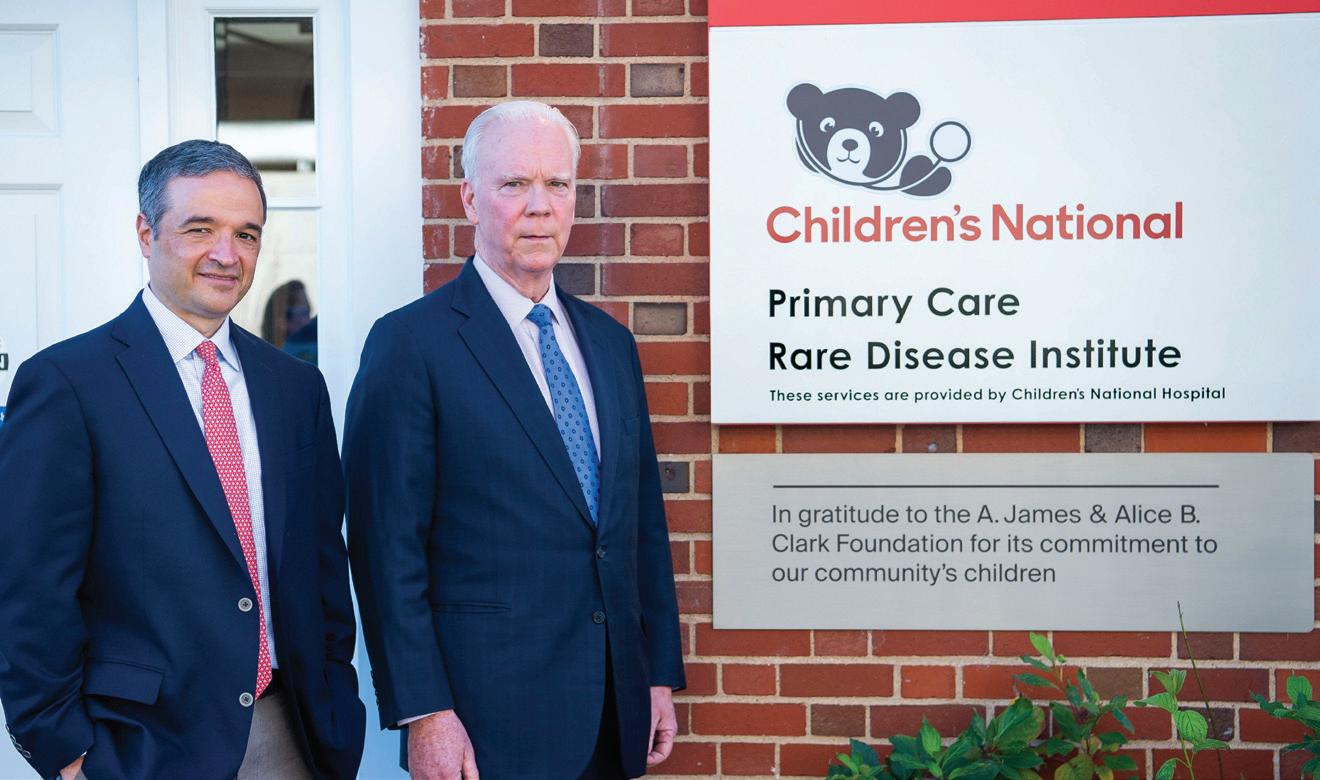

CLARK PARENT & CHILD NETWORK | 2020-2025
In 2020, the Clark Foundation sought to determine how it could enhance the health and well-being of children and families across the capital region through early interventions. It gathered a broad range of stakeholders ― including hospital leaders, community providers and nonprofit organizations ― to envision brighter futures. This conversation led to the creation of the Clark Parent & Child Network through the foundation’s $36 million philanthropic commitment.
This network orchestrates the work of more than a dozen teams at Children’s National and partner organizations citywide. It aims to create the best possible health outcomes for expectant women, infants and young children. A pioneering, comprehensive system of screenings, community outreach, research and wraparound services sets a new standard and elevates community health.
62,000 patients received care
23,000 DC Mother-Baby Wellness patient encounters for mental health and other support
8,000 screenings for mood and anxiety disorders in the NICU and Emergency Department
6,000 patients received services through our Whole Bear Care program, integrating mental health into primary care visits
In 2022, the Clark Foundation made an additional commitment to ensure that the network’s efforts endure. It endowed two new chairs at Children’s National. Lee Savio Beers, MD, who guides the network’s infant and toddler efforts, became the A. James & Alice B. Clark Distinguished Professor of Early Childhood Intervention and Advocacy.
“Early childhood is so important because 90% of brain development is in the first five years of life,” Dr. Beers says. “Being able to intervene and support a family in those early years really has a significant impact.”

Catherine Limperopoulos, PhD, who leads the network’s prenatal-neonatal care, became the A. James & Alice B. Clark Distinguished Professor of Maternal-Infant Health. The foundation’s investments drive pioneering research by Dr. Limperopoulos and her team into how maternal stress impacts a child’s developing brain, even before birth. “Our research shows how healthy moms equal healthy babies,” Dr. Limperopoulos says.
As the Clark Foundation sunsets this year, it made a final, powerful gift to Children’s National. A $5 million commitment will transform cardiac research and care by helping establish a new Children’s National Heart Research Institute.
The gift reflects a commitment from multiple generations of the Clark family. Just as Jim’s relationship with the hospital began with an ill son, the new commitment started with Chip, Jim’s greatgrandson and Courtney’s grandson.
Doctors discovered that Chip had aortic valve stenosis, requiring a balloon procedure shortly after he was born. “Children’s National gave us hope and exceptional care during a difficult time,” says Chip’s father, Clark Pastrick. “While Chip’s journey isn’t over, this gift ensures the best care will always be there for him and others like him.”
This investment creates a fourth Clark Professorship at Children’s National. Wayne J. Franklin, MD, MBA, senior vice president of the Children’s National Heart and
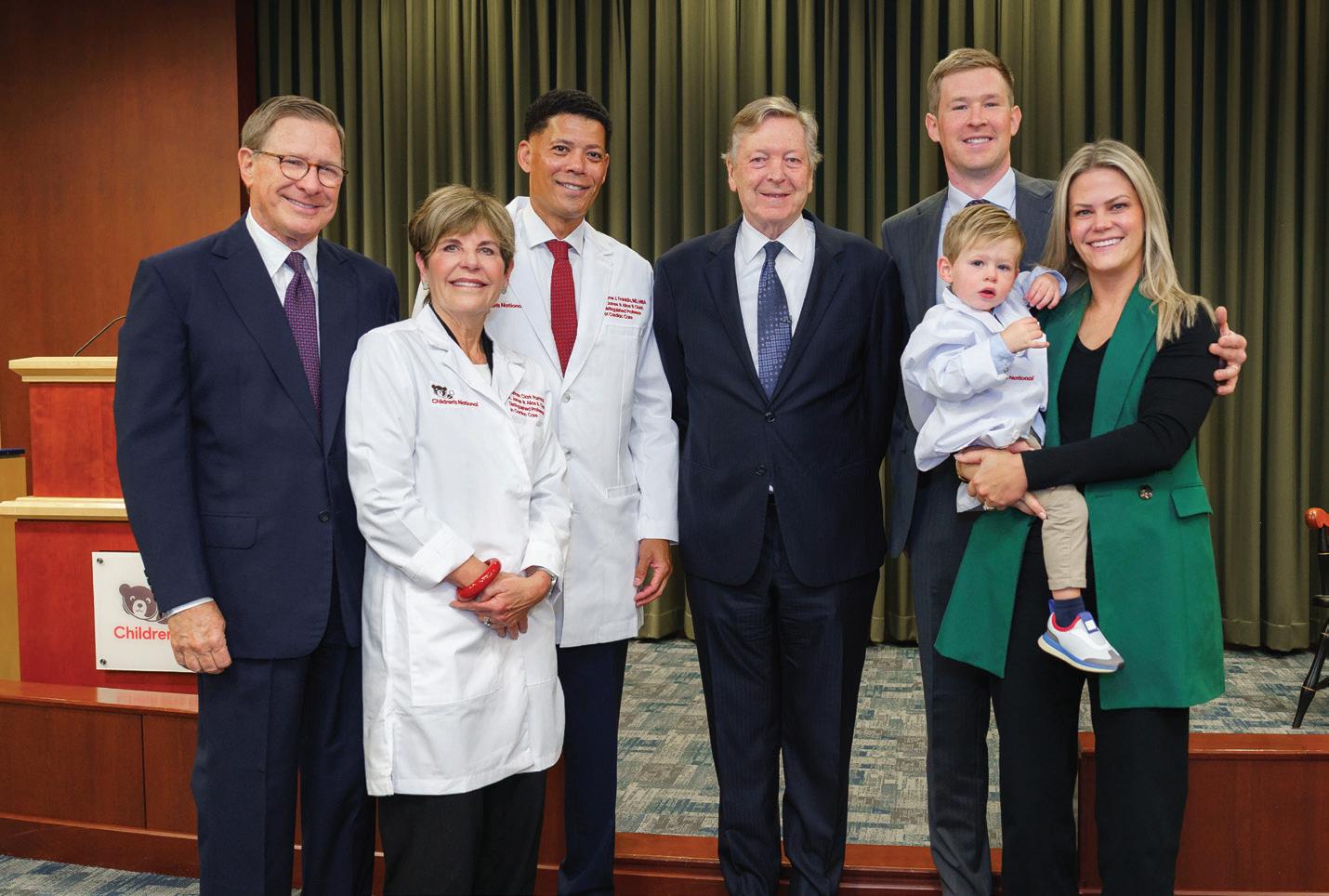

Lung Center, is the inaugural holder of the A. James & Alice B. Clark Distinguished Professorship in Cardiac Care. Dr. Franklin leads efforts to revolutionize the treatment of congenital heart disease, from fetal life through adulthood.
The gift helps to make exercise a core part of treatment for children with heart disease. Studies show that it can improve the health and quality of life for patients with a wide range of conditions. In 2025, the hospital recruited Pascal Amedro, MD, PhD, a world-renowned

specialist, as the Dunn Family Professor of Cardiac Research. Dr. Amedro will lead a new rehabilitation program to improve care for chronic childhood conditions and diseases.
“The relationship between the Clark family, the Clark Foundation and Children’s National has been a true partnership,” says Del Guercio. “Our investments have led to many benefits for children and our community, but I believe their impact will be even greater in the future.”

DISCOVER THE ART OF HEALING
Clinical social worker Jennifer Floran, LICSW, LCSW-C, pays close attention to parental wellbeing for the families in her care because she sees the profound impact it has on their children’s health. Beyond the duties of her role, Floran may make a follow-up phone call to offer advice to a mother who can’t sleep. She may provide ongoing support for a parent exposed to violence or visit a teen mom to
help celebrate her new apartment. Floran often looks for opportunities to take what she calls these “extra steps of care.” Each one makes a difference.
“Parents don’t always have the village they need,” she says. “It’s important to me that all parents at Children’s National feel at home in our hospital ― especially mothers in the perinatal stage, which is the period around childbirth, and families with very young children and teen parents. I want them to trust in our care, as if we were family.” Floran says this is especially critical for parents facing medical challenges, mental illness and poverty.
Floran works in our Healthy Generations and Early Childhood Behavioral Health programs, both part of the Clark Parent & Child Network, funded by the A. James & Alice B. Clark Foundation.
Last spring, two unrelated adolescent parents in Healthy Generations ― the teen-tot program that provides comprehensive, family-centered healthcare for young parents and their children ―
invited Floran to tour their first apartments. “Securing stable, independent housing is a big deal for teen parents,” Floran says. “They are thrilled to show me everything ― a nice bathroom, a roomy closet, a comfy chair, a basket full of toys for their baby.”
Floran sees hope and excitement on the faces of these teens, along with relief that they finally have a place to call their own. She sees worry that life will get too challenging. She celebrates the good moments and also helps to keep the parents grounded and focused on goals. She connects them with resources to learn how to manage money, grocery shop and figure out childcare.
“Teenagers are motivated by the strength of their relationships,” Floran says. “My Healthy Generations patients know that I’m part of their support network and here for them.”

Jen is deeply compassionate and patient, and she builds strong, trusting relationships. She creates safe spaces where clients feel heard, supported and empowered. Jen is a tireless advocate who brings heart and integrity to every interaction.”
― Yael Smiley, MD, Medical Director, Healthy Generations Program
Floran joined Children’s National in 2011 and worked for seven years as a clinical social worker for Healthy Generations. After a short break, she returned in 2021 to provide therapy and hands-on support in that program and to lead its social work team.
Her work with our Early Childhood Behavioral Health program extends her expertise to young children, creating a comprehensive approach to care. The multidisciplinary program delivers personalized, high-quality behavioral healthcare to kids from birth to age 6. It supports early identification and intervention for behavioral and mental health needs to help children meet their full potential. “Even the smallest effort can improve a child’s life trajectory,” Floran says.
Floran and her team recently helped a family with a 4-yearold whose mental health struggles might have led one of the parents to quit their job. The child’s challenges led to constant disruptions in childcare and preschool, forcing the parents to leave work daily. Wraparound services eased their stress and helped them overcome these issues. Floran’s support included providing connections to a specialized support group, check-ins and therapy for the parents. They say this early intervention for their child and unwavering support changed their lives.

Jen exemplifies compassionate care. She puts patients and families at the center of her work, goes above and beyond to make them feel supported and connects them with the care they need.”
― Leandra Godoy, PhD, co-director, Early Childhood Behavioral Health Program




Floran measures her success by how well she personalizes care for each family and the strength of her relationships, especially during tough times. Once, a family member asked her to visit the bedside of a terminally ill teen parent, a Healthy Generations patient in her care.
Floran offered compassionate support as the teen made decisions about the end of her life and her children’s future. She passed away soon after.
When gun violence took the lives of another teen patient and the father of her children, Floran reached out to the children’s grandfather to help ensure that they would continue to receive the medical care they needed.
“Helping those kids flourish after what they’d been through and contributing to their future health by maintaining the relationship meant a lot to me,” Floran says.
“We’re all part of the same community. Supporting the mental health of parents and providing critical services helps children thrive,” she says.
As a child, Jeffrey Dome, MD, PhD, loved biology. He devoured nonfiction books and entertained himself with chemistry sets. “I quickly figured out that knowledge really is power,” he says. “The more you know, the more you can help people.” His passion for a career in medicine followed.
As senior vice president of the Children’s National Cancer and Blood Disorders Center, Dr. Dome oversees care for children with cancer, immunologic and blood disorders. He is the Thomas Willson and Lenore Williams McKnew Professor of Pediatric Oncology.
As an internationally recognized expert on pediatric solid tumors, Dr. Dome leads pioneering research that makes a big difference in patients’ lives. He cares for and guides families of children with cancer and provides lifesaving treatments. He oversees daily activities in the sanctuary that is the 4 East Unit, with a great deal of understanding, honesty and, sometimes, a hand to hold.
The idea of a career in community service runs deep in the Dome family. Lauren Dome, CPNPPC, PMHS, Dr. Dome’s wife, is a nurse practitioner at Children’s National.
The two met about 30 years ago while they both were working at Yale New Haven Children’s Hospital in Connecticut. He was a resident. She was a PICU nurse. “We shared in the care of a very sick patient recovering from congenital heart disease surgery,” Dr. Dome says. “We both were drawn to the field and that common bond of wanting to serve and care for others in the community.”
The couple has worked together at several other hospitals. Dr. Dome joined Children’s

National nearly 20 years ago. Lauren joined 15 years ago and works in neurology.
In 2022, their daughter Amelia Dome, MSN, RN, came to Children’s National as a nurse in the hematology-oncology unit. “I shadowed a nurse at Children’s National when I was considering nursing school,” says Amelia, who originally planned on a career in health policy. “One day we spent an hour helping a child take her medication. The nurse really got to know the child and was tremendously patient and


kind. It made me want to give that kind of compassionate care in my everyday working life.”
This legacy of service careers also extends to Amelia’s brother, Garrett. He works as a teacher and school administrator in the District of Columbia Public Schools system.
For Amelia, the best part of working in the same unit as her father is the time they get to spend together. They sometimes work together on holidays and weekends.
Dr. Dome says having his
daughter on the unit has reinforced the importance of collaboration. “I’ve always had an appreciation for nurses and how critical they are to successful outcomes for our patients,” Dr. Dome says. “Hearing about Amelia’s day-to-day work gives me an even greater understanding and appreciation of our nurses’ contributions.”
In early 2024, Amelia prepared a patient for a stem cell infusion. “It’s a big deal on our unit,” she says about the lifesaving treatment. “We talked through everything and decorated his
room.” The boy’s father had a lot of questions. Amelia took the time to answer and explain.
Afterward, the patient’s father told her he always would think of her as a part of his son’s new life. “I loved making a difference for them during such a difficult time,” Amelia says. “To me, this is the power of nursing. The more time I spend working in this role, the more I feel like I’m right where I’m meant to be.”
Dr. Dome’s leadership at Children’s National allows him to help a
broader patient population. As North American president of the International Society of Pediatric Oncology, he expands the hospital’s community and drives research and collaboration with other cancer experts that lead to better care and treatments for all children.
“We learn a lot from each other and build connections, even across the ocean,” he says. “This puts us in a position to help more kids.”
In November 2024, Dr. Dome traveled to Kuwait to see patients he previously treated at the hospital. This was his fourth visit since 2011. “It was very touching to reunite in their home environment, experience their gratitude and see them thriving. It meant a lot to them that I would travel to see them and continue care from Children’s National.”
Dr. Dome believes this kind of concern and empathy are critical in the hospital setting. “It isn't enough to have medical knowledge or nursing skills,” he says. “An important part of creating positive outcomes is to communicate well, be honest and really care. I’m so proud of my family for carrying out this legacy of caring, one patient at a time.”
If a hospital can have a heart, Children’s National has a big one. The passion of the people who work here makes us one of the top in the country. We don’t always have the same deep pockets as other organizations, but we accomplish so much.”
― Dr. Jeffrey Dome
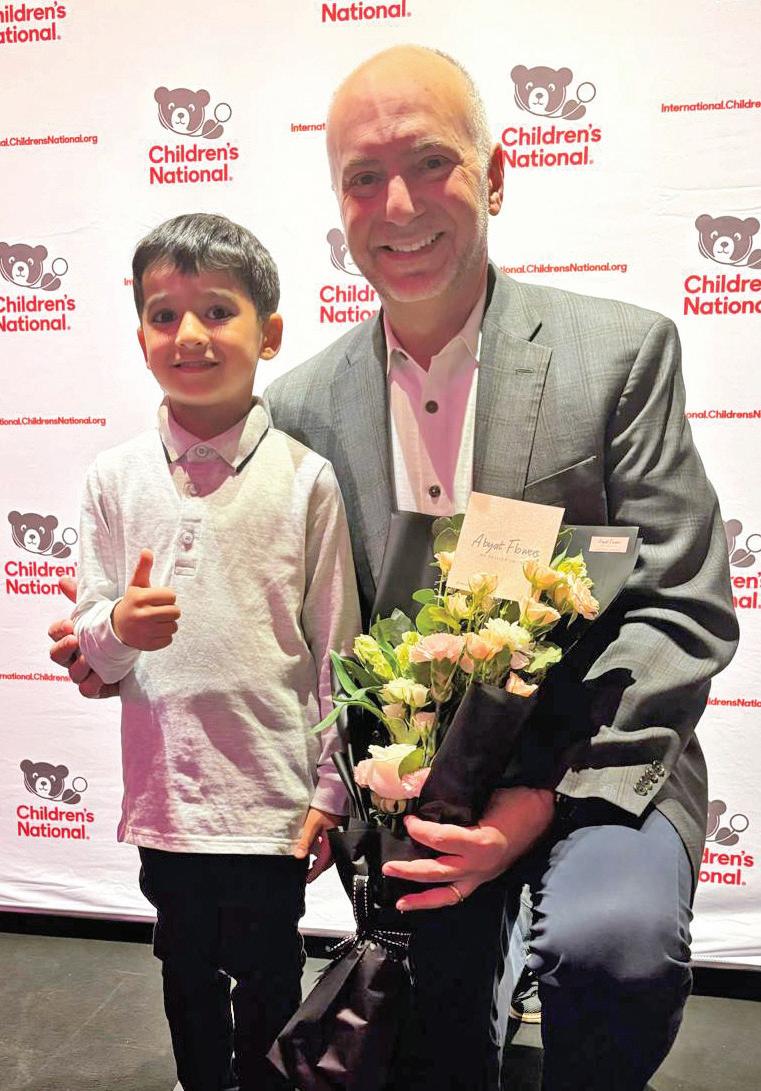


By Lauren Dome, CPNP-PC, PMHS
Sometimes, one of the most important things I do as a nurse practitioner is not bring my laptop to appointments with patients and their families. I specialize in neurology and see patients at our main campus and at our Capitol Hill, Friendship Heights and Montgomery County locations. During those visits, I focus on listening.
Of course, I focus on medicine too. But sometimes mothers cry when they realize my priority is simply listening. When you allow someone to tell their story, the emotions come out. That kind of impact is not measurable. It’s hard to quantify a hug from a mother, her tears and her appreciation that someone cares so much and wants to hear about her child and help.
When I think about the legacy of my family, I’m especially proud of Amelia and the care she gives. I believe most of the work everyone provides at the hospital is rooted in empathy. It is about the care we provide and the relationships we create with patients and colleagues.
For me, that includes mentoring nurse practitioners. For my husband, it includes guiding the next generation of pediatric oncologists and hematologists.
Every little bit of kindness that passes between one of us and a patient or a coworker, I hope, will have a lasting and positive impact.

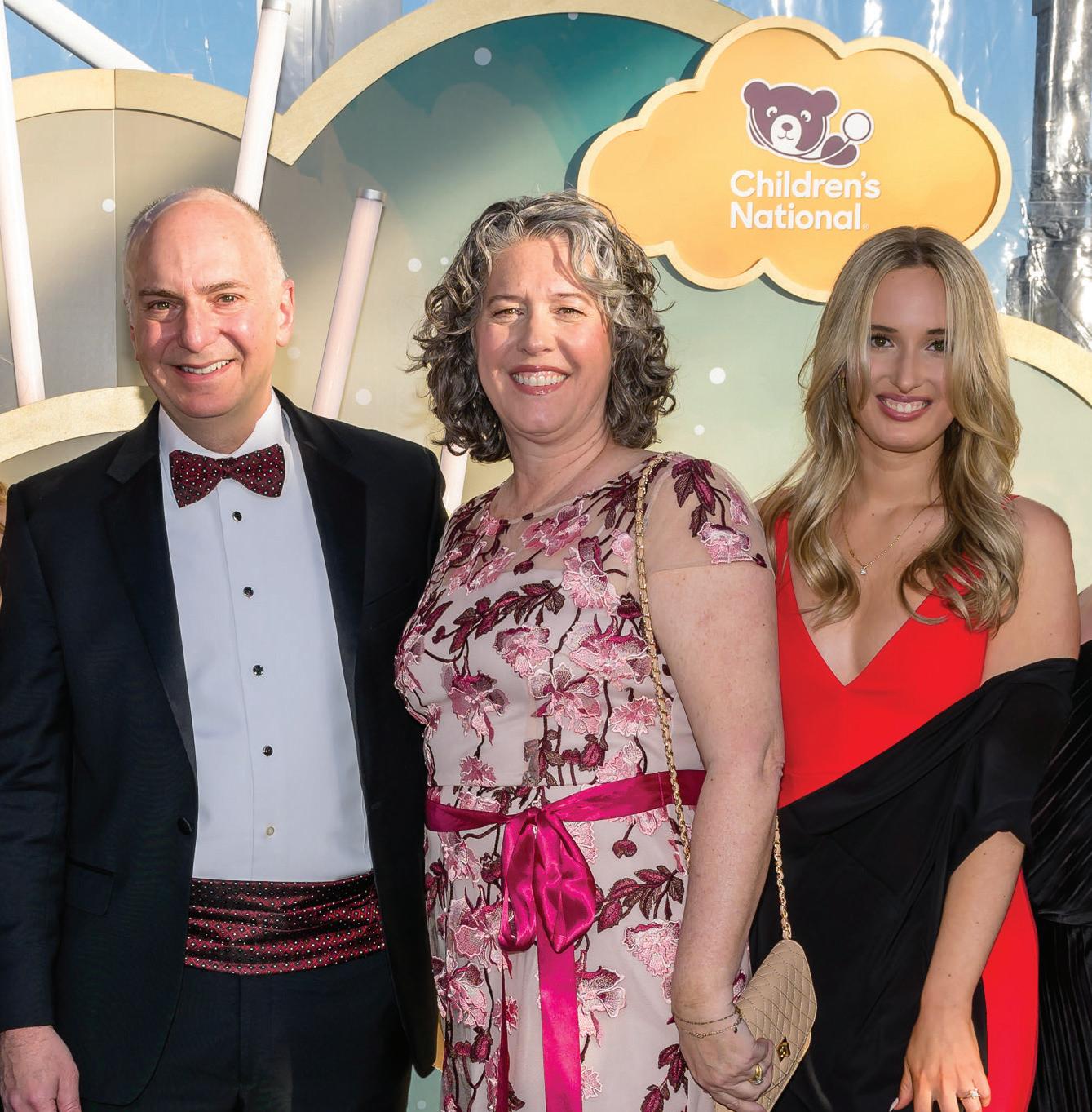
For nearly 20 years in our Cancer and Blood Disorders Center, thousands of patients have found joy and healing through the combined power of creativity and expert guidance. Tracy’s Kids Art Therapy Program in honor of Marcelle and Patrick Leahy is a lifeline and an outlet for many kids during treatment.
Molding and sculpting clay made it possible for 9-yearold Chloe to express herself throughout many hospital stays and two bone marrow transplants. It also helped her improve mobility issues due to an autosomal condition called Farber Disease.
Today, Chloe is thriving after a successful transplant made possible by a donation from her younger sister, Neriah. “Chloe has come so far,” says their mom, Zondria. “Art therapy has been a big part of the process.”
Our board-certified team of art therapists helps kids process the stress that can come with treatment. They work with patients in the outpatient clinic, the unit’s art therapy studio or at their bedside. The program also is available to siblings and caregivers. It offers coping skills essential to healing. “It often is as important as the medicines we provide,” says Dr. Jeffrey Dome, senior vice president of the Children’s National Cancer and Blood Disorders Center.
Steven Hardy, PhD, director of Psychology and Patient Care Services, supervises the program. “Art therapy boosts the healing process by giving young people the courage, clarity and resilience they need to navigate challenging times,” he says.
One day after treatment, 7-year-old Willow made

what she called worry worms in art therapy. She put one of the bead-and-pipe-cleaner creations under the pillow of her hospital bed and whispered her worries to it. She said she felt so much better the next day that she made more. From the door of her hospital room, she handed out worry worms to staff and other patients.
Tracy’s Kids was founded in 1998 by Matt Gerson, who learned firsthand the emotional impact of illness when he had cancer as a 10-year-old. He later joined forces with Tracy Councill, who built the Tracy’s Kids Art Therapy Program at Georgetown University Hospital’s Lombardi Cancer Center. Tracy’s Kids went on to support the establishment of art therapy programs in eight pediatric clinics around the United States, including at Children’s National.
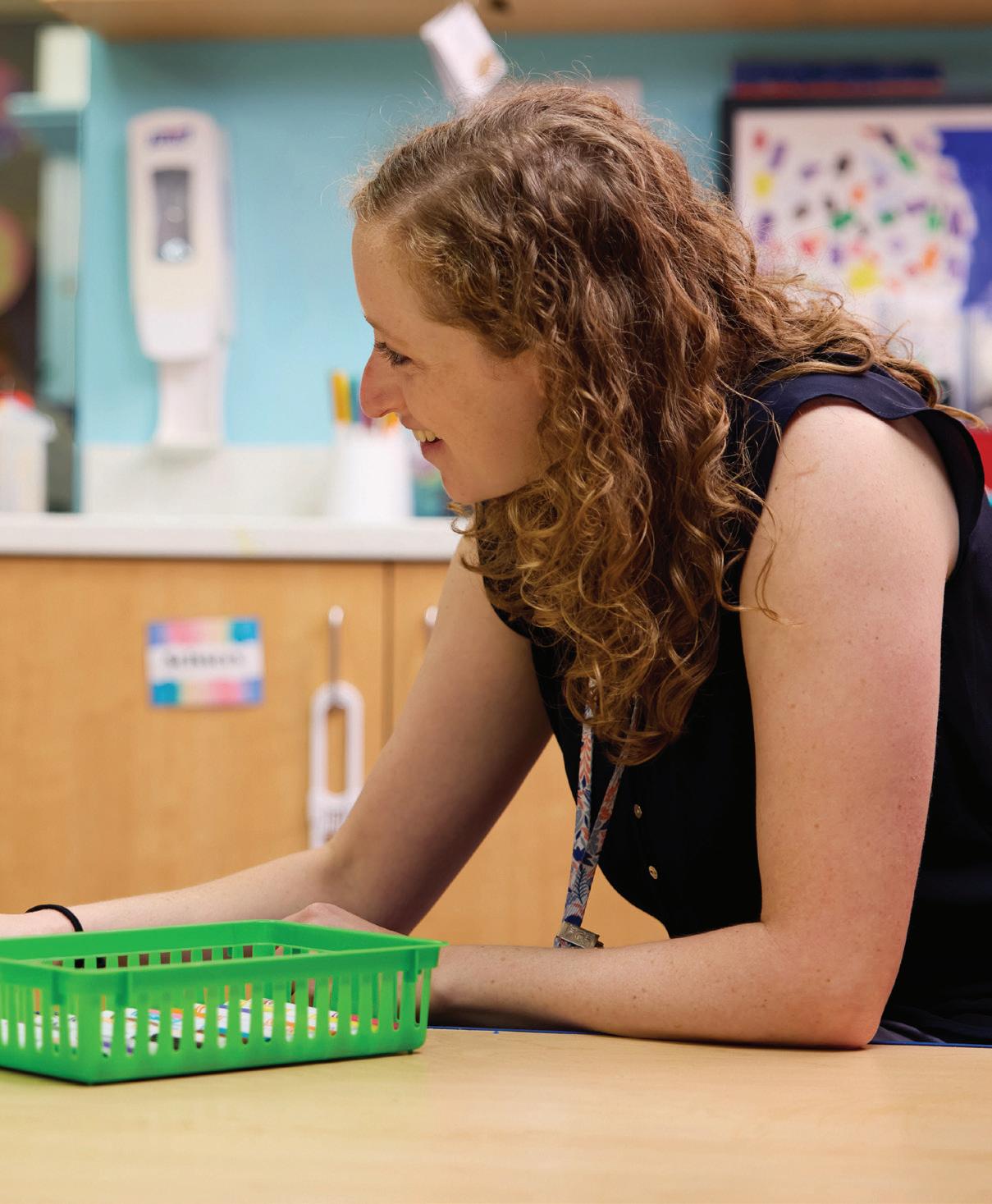


Gerson and Councill’s efforts helped change the standard of care for pediatric cancer and blood disorders to include care for the whole child. Insurance does not reimburse the hospital for art therapy; support comes from Tracy’s Kids and generous donors who have sustained this vital program.
While the Tracy’s Kids Foundation winds down this year, Children’s National remains committed to providing these services that mean so much to patients. Our program was renamed to honor its ardent supporters, former Sen. Patrick Leahy and his wife Marcelle. The mission will continue, but only with the help of our generous donor community.

Tracy’s Kids helps patients in treatment and families facing unthinkable outcomes. It offers bereavement support through remembrance projects like heirloom jewelry and handprint molds.
One neuro-oncology patient’s entire family worked on such legacy projects during the child’s month of hospitalization. Art therapy was a refuge, her mom says. “I’m always going to keep doing this ― drawing, painting ― to work through my feelings.”
Art therapists also organize self-care sessions for staff on our cancer and hematology floor, providing opportunities to bond and manage the emotional toll of their work. “The creative process challenged me to understand everything that can happen when working with these kids,” says Angela, a former teacher at the center. “It helped me connect with people in other roles at the hospital on a very personal level. I have incorporated these strategies in and outside of work.”

Stephanie was diagnosed at age 18 with Ewing sarcoma, a type of cancer that primarily affects the bones and soft tissues around them. Tracy’s Kids art therapists helped her cope while she put her dreams on hold for doctors to remove her tumor. “Without art therapy, I would have shut out the entire world,” she said.
Before Stephanie passed away, she created a special tile when she was in remission for the center’s Victory Bell mural ― a colorful collection of patient art celebrating the end of treatment. This ever-expanding mosaic, which hangs near the art therapy room, serves as a permanent reminder of the strength of our patients.
Provides free art therapy in our Cancer and Blood Disorders Center Includes two full-time and one parttime art therapists and 1-2 interns

Delivers 2,000 sessions annually
Supports 4,750 participants each year

Researches how art therapy benefits patients Is supported entirely by donors
Without art therapy, I would have shut out the entire world.”
― Stephanie


Olivia’s tile also is on the wall. She created it to celebrate the end of treatment for neuroblastoma when she was 2. Art therapy, especially creating with glitter paints and beads of water and plastic, gave her something to look forward to during chemotherapy, radiation and blood transfusions.
“Art therapy saved Olivia during treatment,” says her mom, Katelynn. “She was able to express her feelings and come out of hard moments. We now have an entire space in our house that mimics the center’s art studio.”
The team made Olivia an honorary art therapist because she loved to “open” and “close” the studio, turning out the lights and shutting the door after each visit. When she celebrated the end of cancer treatment by ringing the ceremonial bell with her family and friends, her art therapists were there to cheer her on.


Ariana has defied expectations since day one. She was born with one kidney and a cloaca, a condition in which a single opening serves the digestive, reproductive and urinary tracts. “I saw the look on the nurses’ faces and knew something was wrong,” says her dad, Roland. “It was heartbreaking and supposed to be the happiest day of our lives.”
Connie held her daughter for just seconds before doctors referred her to Children’s National. That night, Ariana had her first surgery, and monitoring followed in our NICU. Her parents drove back and forth from their home in Annapolis, Maryland, each day to see her. “Her life was hanging in the balance,” Connie says.
Three days later, Ariana had a major hemorrhage in her lungs. Connie and Roland received a call to prepare to say goodbye. “I sprinted through the hospital to see her,” her dad says. “Security tried to chase me down.”
By the time Ariana’s parents arrived at the NICU, her care team had stabilized her. They experienced a rollercoaster of emotion and profound gratitude. “She is a fighter,” Roland says. “Ariana knew she was going to make it before we did.” Ariana’s parents expected that she would need additional procedures as she developed. They did not know if she would be able to walk with vertebrae missing in her lower spine.
At 10 months, Ariana took her first steps. Throughout her childhood, she ran track, danced and swam.
“Learning about my condition made me want to do more and push myself,” says Ariana, now 20. By age 7, she had undergone eight reconstruction surgeries and, with education, started to lead a healthy life. She learned to insert her own urinary catheter, a tube to drain the bladder. Her family found a wealth of resources and comfort from her care team, including Hans Pohl, MD, our division chief of Urology. “Dr. Pohl was an essential part of her life through age 18,” Roland says.
Ariana lights up when she talks about Children’s National. She remembers listening to music during MRI scans, watching her favorite movies and coloring with child life specialists. “I love the environment so much,” she says. “Even when circumstances were scary, the staff did everything they could to make me feel safe. It felt bittersweet to move on.”
She now studies communications at Loyola University in Maryland, with an interest in medical writing. One day, she hopes to write a book to share her story through a research lens. “I never met someone like me growing up,” Ariana says. “That’s why I found a passion for writing. I want others to feel less alone.”
Connie says Ariana’s resilience inspires her. “It’s a testament to the human spirit and the incredible support we found,” she says.
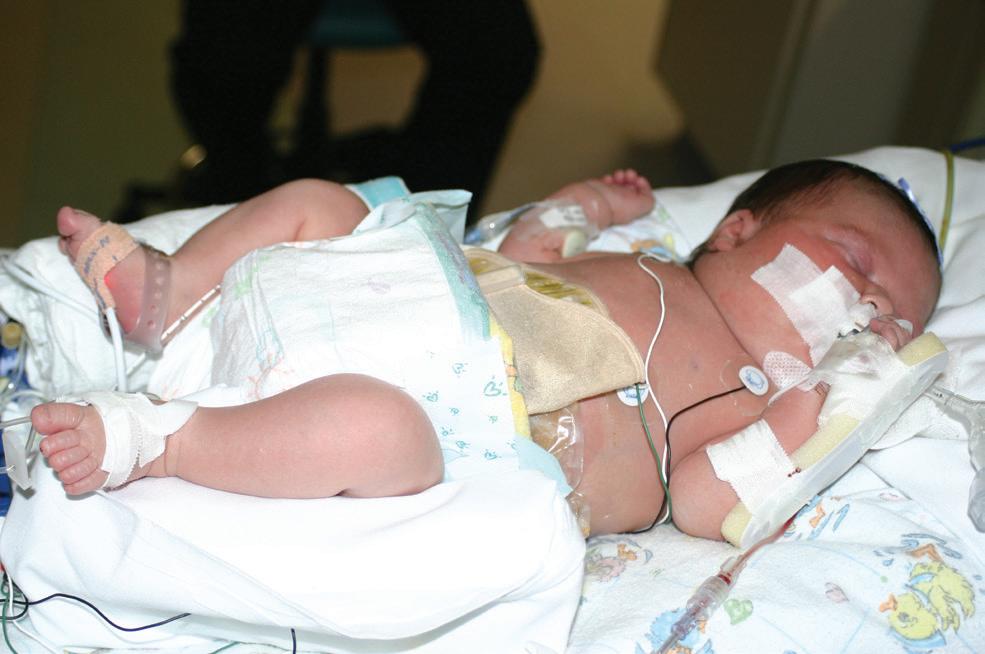
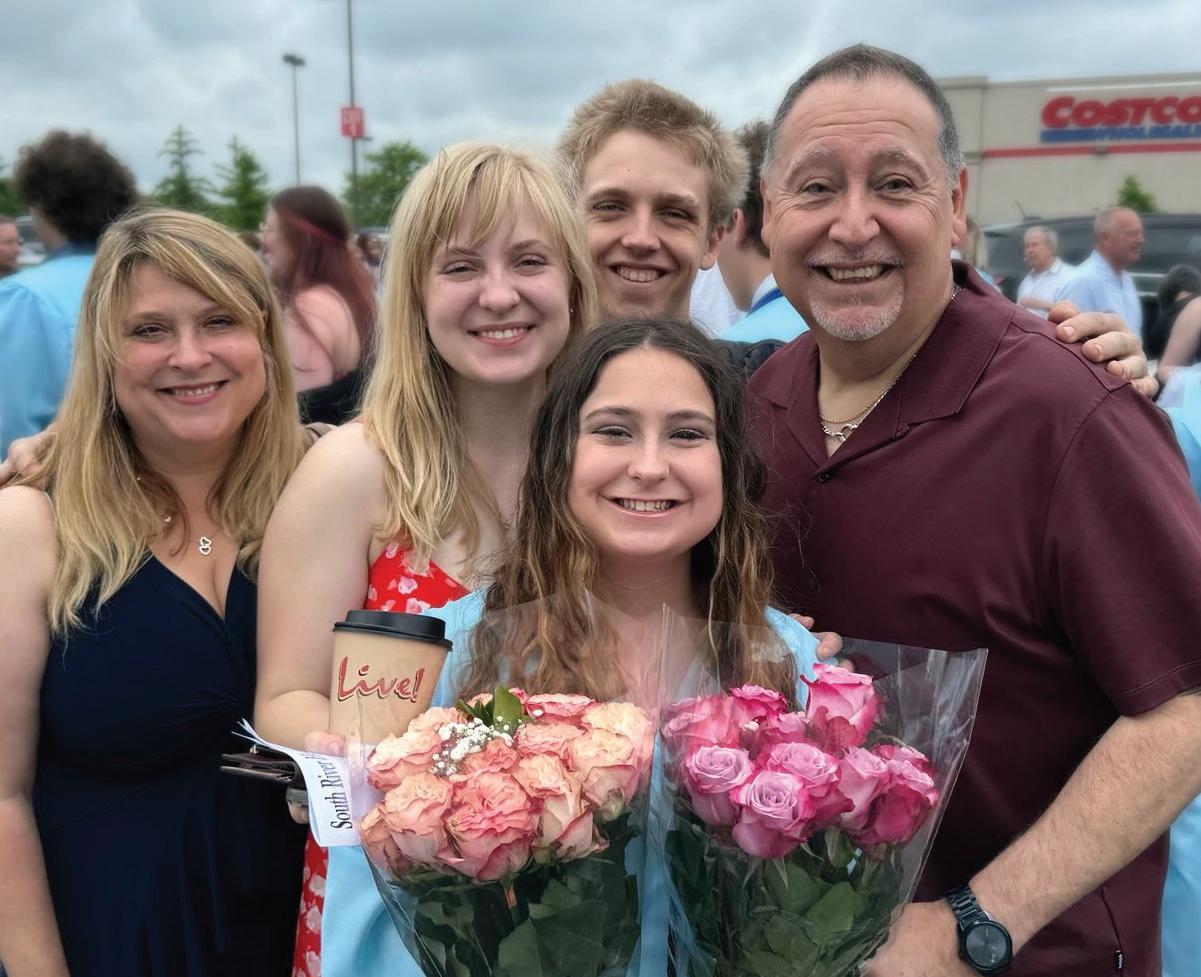
Patients like Ariana and her family make the day-to-day hustle so rewarding. Her parents’ cheerful optimism reflected their conviction that she would lead a long and fulfilling life.”
― Dr. Hans Pohl
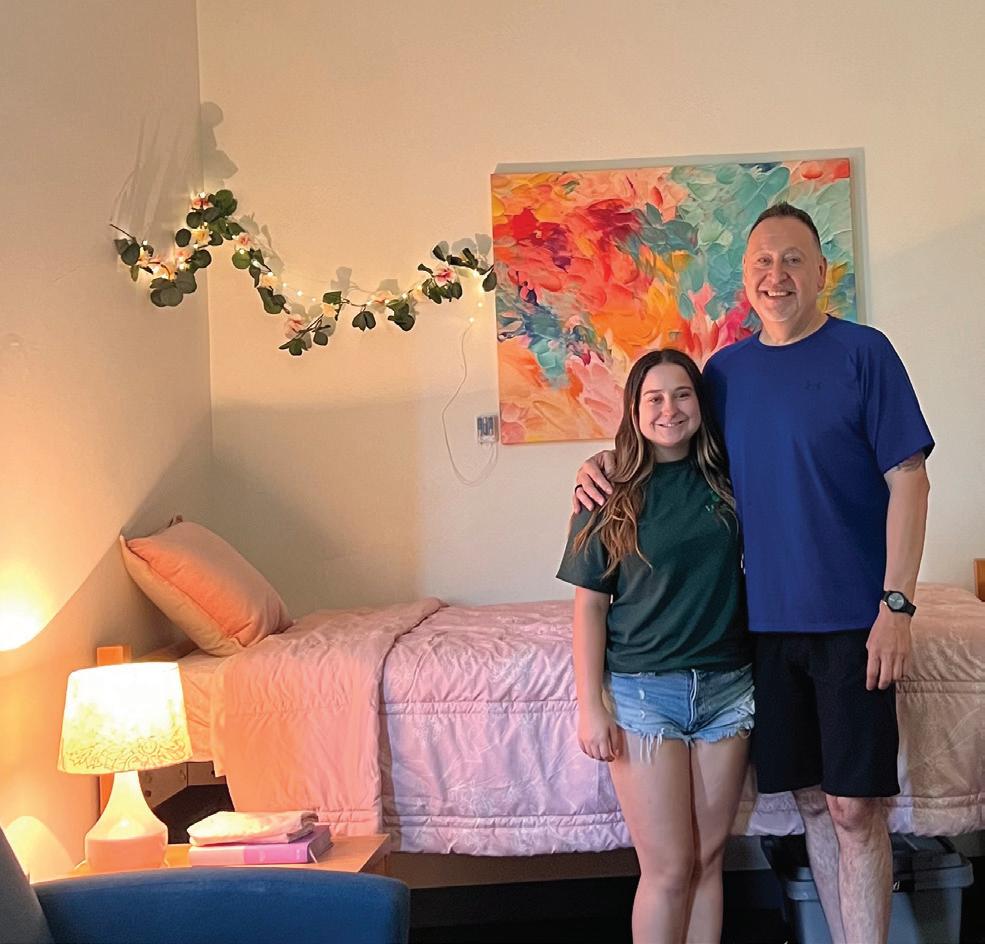

KenLeigh, 12, loves to play with animals and build Legos ― two activities she gets to enjoy at Children’s National during treatments for leukemia. She says her care team makes the hospital feel like home.
“Our life completely changed the day she was diagnosed,” says LaDonna, KenLeigh’s mom. “Everyone at the hospital supports us. From day one, they made my wife and me feel comfortable and explained KenLeigh’s treatment plan. They welcomed her sisters, spoiled them and brought them toys. We truly felt like family.”
KenLeigh says the Children’s National team comforted her from the beginning. “The child life specialists asked if I wanted visits from the hospital dogs, or to color or play games. I even learned how to knit! They made staying there easy,” she says.
Last winter, KenLeigh decided to bring that same


joy to other patients during the holidays by hosting a toy drive. With the help of social media, she and her family collected donations from friends and community members and delivered toys to patients at Children’s National. “A lot of kids have to stay in the hospital during the holidays, and that’s a tough place to be,” she says. “I wanted to give them some fun and special memories.”
“KenLeigh is still in treatment, and we want to continue to support other families because we know what they are going through,” LaDonna says.
KenLeigh is hosting the toy drive again this year, making it a fun-filled day with games and activities.
“All I want for Christmas is to give back,” she says. “I’ve made friends with a lot of kids in the hospital and learned that most will be patients there for years ... for many holidays to come. That’s why it’s so important to pay it forward.”

In 2025, we announced the following faculty appointments. Professorships, also known as chairs, represent the highest honor in academic medicine. Generous philanthropists who establish professorships at Children’s National permanently link their passion with our mission. The endowments enable us to initiate and advance discoveries. Pediatric leaders in these roles make outstanding contributions in their fields to improve children’s health.





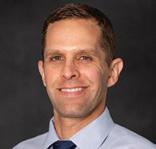
A. James & Alice B. Clark Distinguished Professorship in Cardiac Care
Wayne J. Franklin, MD, MBA
Dunn Family Professorship in Cardiac Research
Pascal Amedro, MD, PhD
Fight For Children Distinguished Chair in Academic Medicine | Nathan Kuppermann, MD, MPH
Wendy Goldberg Professorship in Translational Research in Child Health and Community Partnerships | Kavita Parikh, MD, MSHS
The Richard L. and Agnes F. Hudson Endowed Chair in Health Services Research
Beth Tarini, MD, MS, MBA
Professorship in Precision Medicine
Michael Keller, MD
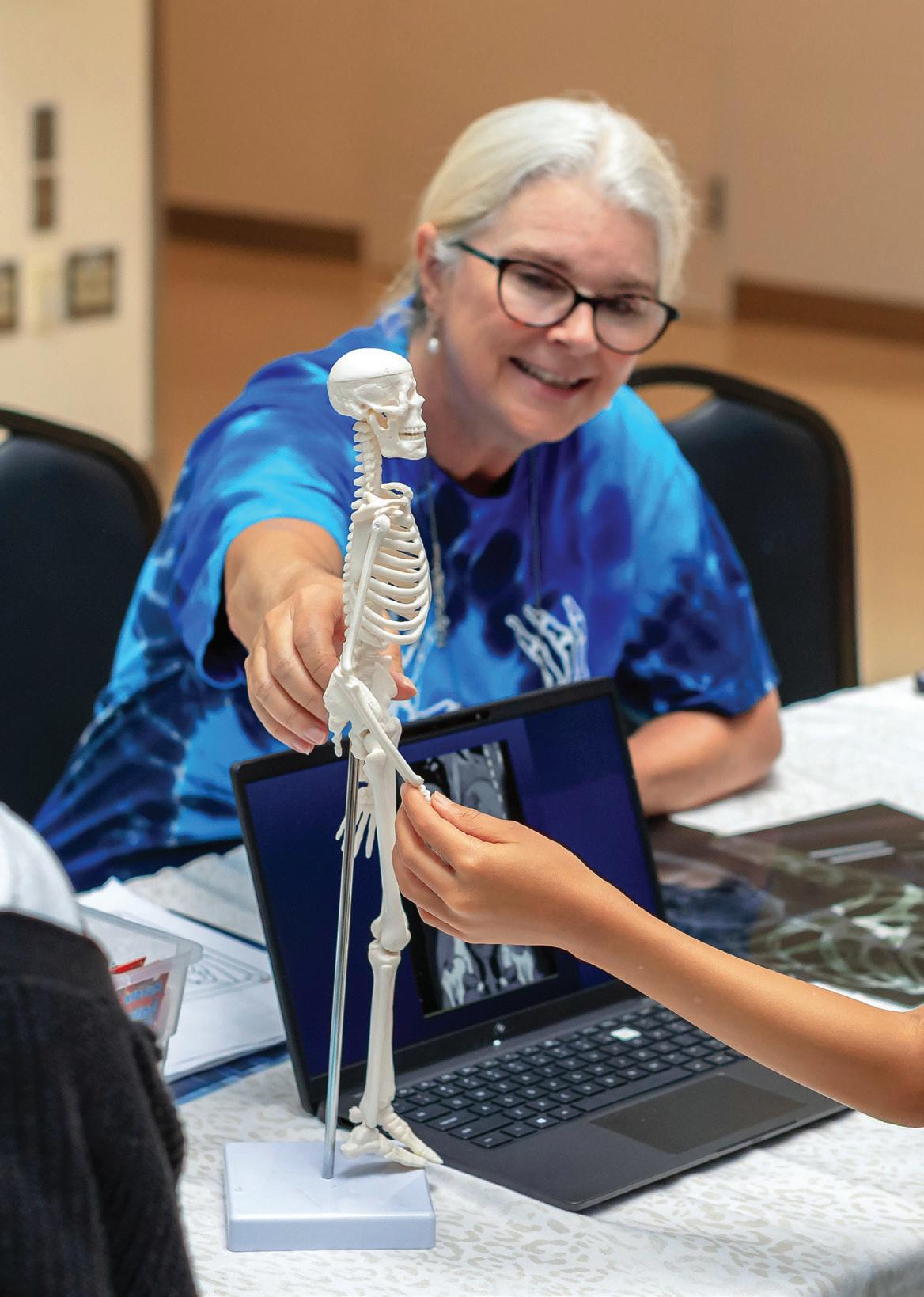
More than 100 kids, including patients, had a fun, hands-on opportunity to learn about pediatric care at Children’s National through the eyes of our hospital mascot, Dr. Bear.
A Day With Dr. Bear featured interactive learning stations where representatives from nearly a dozen hospital areas showcased their work to help kids feel better. Curious young minds learned about Child Life and Integrative Care Services and a range of disciplines, including cardiology, colorectal and pelvic reconstruction, diabetes, occupational therapy, phlebotomy and radiology.
Children got to meet Dr. Bear and personalize their very own Build-A-Bear, which led them on a journey to meet pediatric specialists and collect special tokens. The Diabetes Clinic station, for example, used kids’ own bears to demonstrate how patients receive insulin.
Families toured our SkyBear helicopter, visited the Bunny Mellon Healing Garden, spent time with a volunteer therapy dog and learned about

philanthropy. “It’s events like these that get her through the day,” says one parent about the experience of his daughter, who was inpatient at Children’s National.

In April, a futuristic gala celebrated the partnership between Children’s National and the United Arab Emirates to transform children’s health. Stars twinkled from a massive digital cube on stage and lit the sky above the Abu Dhabi’s historic Qasr Al Hosn, which means “palace fort” in Arabic and stands as a symbol of hope and innovation.
The evening, hosted by First Abu Dhabi Bank (FAB), showcased how artificial intelligence (AI) is reshaping pediatric care worldwide. Marius George Linguraru, DPhil, MA, MSc, a leading innovator at Children’s National, delivered the keynote address. “AI technology can now diagnose the rarest diseases,” he says. “It can teach robots to perform surgery and personalize medical treatment for every child.”
“We are entering a transformative era,” says Hana Al Rostamani, FAB Group CEO. “AI and precision medicine can redefine care.” In conjunction with the event, the bank made a generous gift to support an activity coordinator and programming for our Child Life and Integrative Care Services. It will ensure that more children and families benefit from therapeutic play and holistic care during their hospital journey.
Children’s National President and CEO Michelle Riley-Brown attended the event with Foundation Board Chair Kathie Williams. Riley-Brown, in her remarks, expressed gratitude for the enduring partnership. “We began our mutual journey 40 years ago, when we cared for our first Emirati patient,” she says. “We discovered our shared North Star: caring for children.”
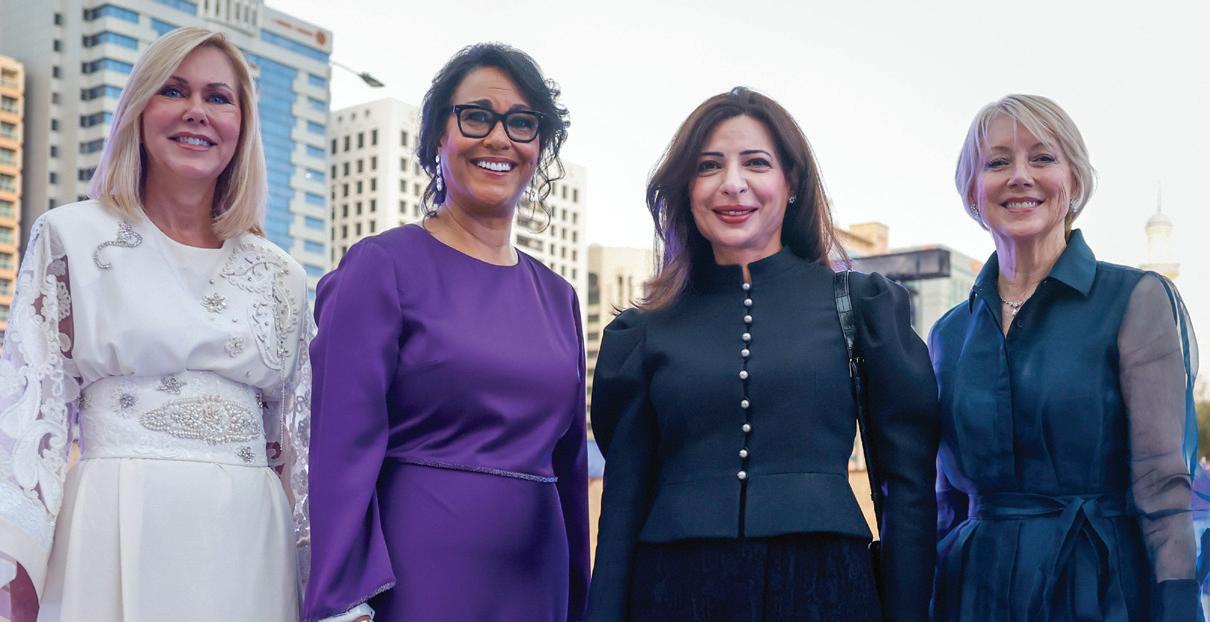
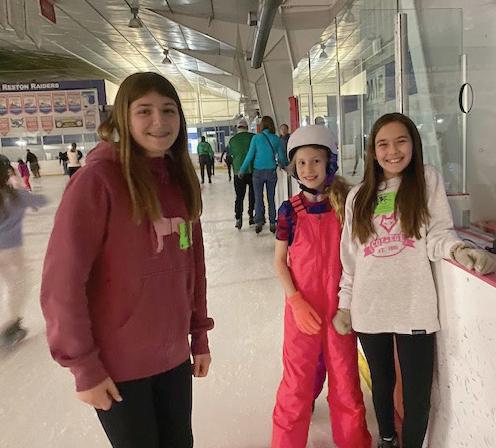
The Girl Scout promise and law are to “help people at all times” and “make the world a better place.” A troop in Great Falls, Virginia, did both by improving the patient experience in our Cardiac ICU and Heart and Kidney Unit. Along the way, the scouts earned a Bronze Service Award, the highest honor for a junior troop. Through donations and proceeds from a family ice skating night, the scouts raised funds and collected items to create a child life library of games, puzzles, toys, books and art supplies for patients to enjoy.
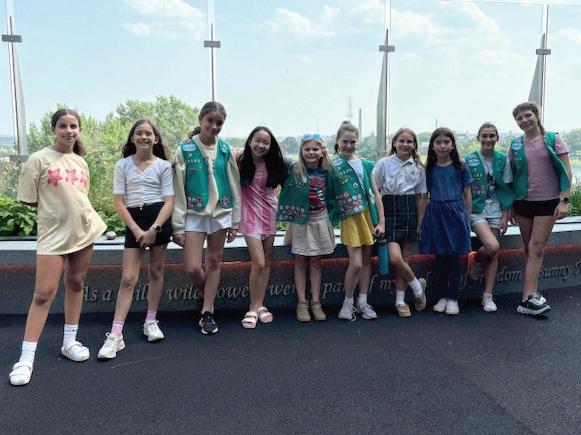
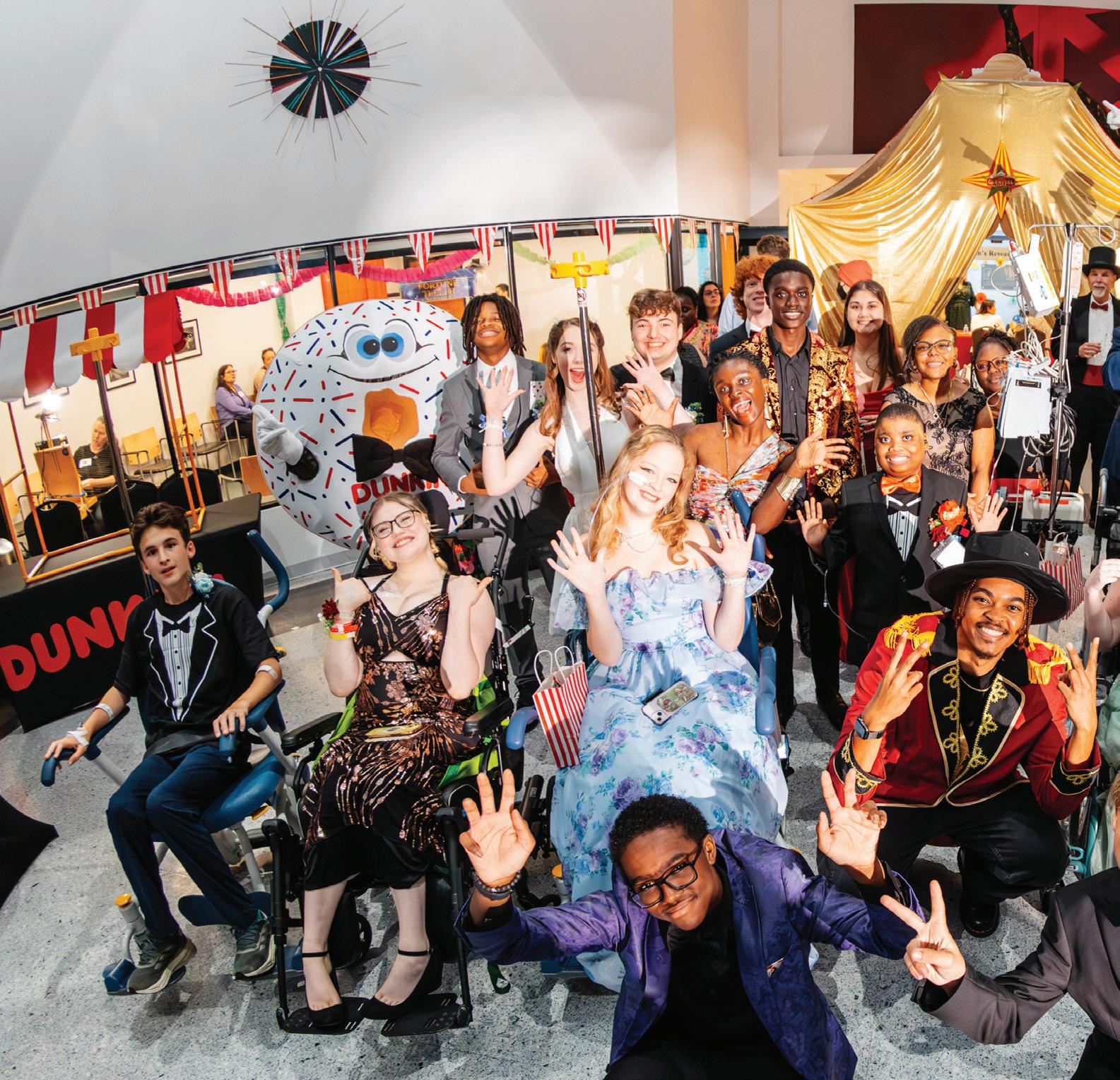
Jocelyn, 12, a troop member, spent enough time in our Cardiac ICU to know how much this means to patients who often spend long days in bed. Jocelyn had two open-heart surgeries at Children’s National, one at six days old and another at age 7.
“I get to help patients where I was and with what I went through,” she says. “I think it will mean a lot to them, and if they feel sad, having these things shows them that someone cares to help them feel better.”
Troop Leader Lynne Spies says the scouts brainstormed to come up with a meaningful action project.
“To support Jocelyn and help kids, I think that’s been very touching to them,” Spies says. “Learning how to do something like this is a valuable skill and gives them pride. The growth they have shown in their maturity and mindset to make a difference in the world ― that’s what girl scouting is all about.”
Jocelyn’s mom, Jessica, says some of her daughter’s fellow troop members have joined their family over the years to participate in the Race for Every Child. Jessica says they will always be involved in Children’s National. “It was such a nice surprise when I found out they were going to do something for the hospital, especially the Cardiac ICU, which makes miracles happen every single day,” she says. “There are so many Jocelyns out there, and we want to help them all.”
I get to help patients where I was and with what I went through.”
― Jocelyn, patient and troop member
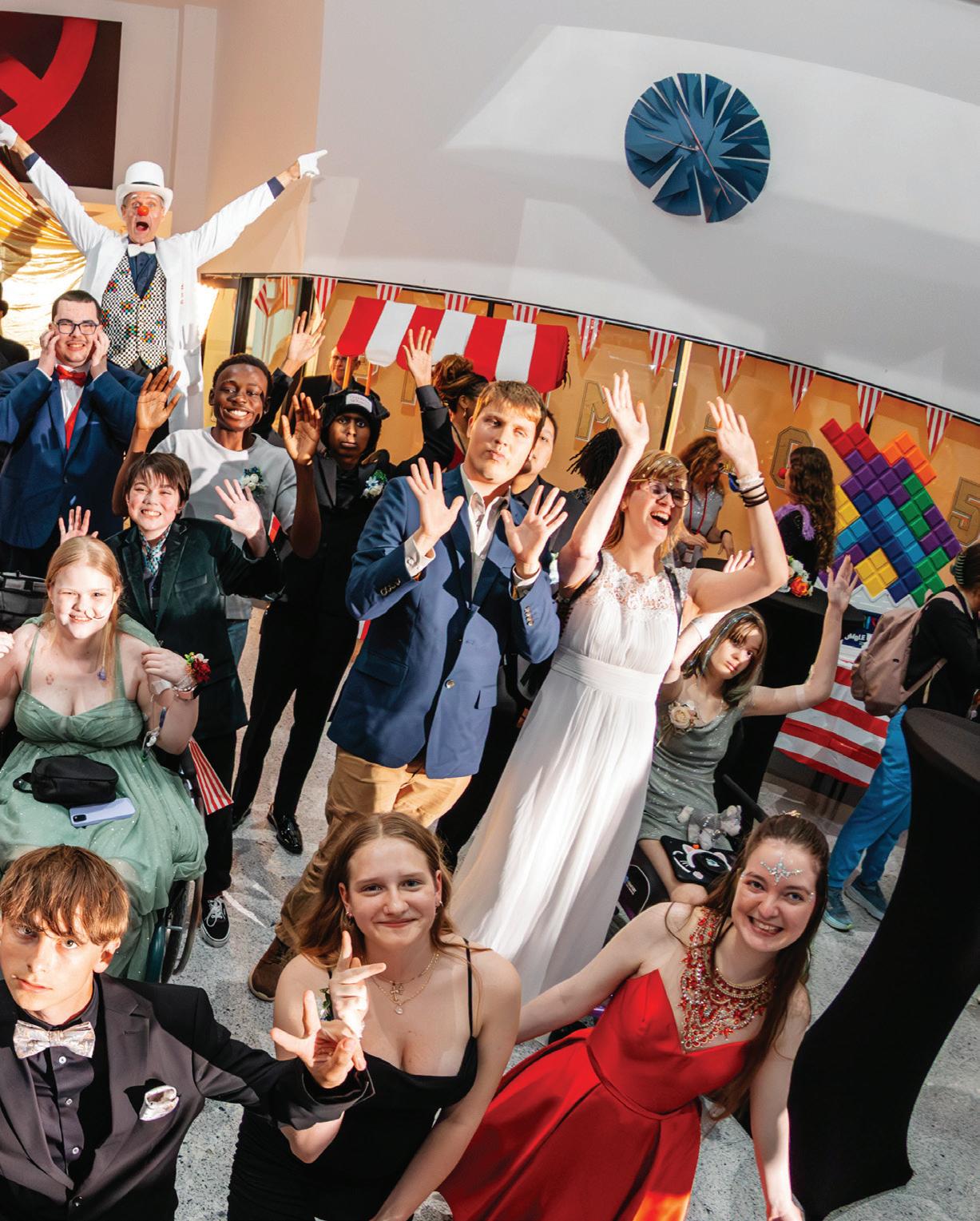
For one night each spring, the hospital gets an extra dose of laughter, music and dancing. “It’s special being able to share an experience with people who understand what you’re going through,” says Alex, 19.
That spirit defined the third annual Dunkin’ Prom, supported by the Dunkin’ Joy in Childhood Foundation, which gives patients who missed their school proms a chance to simply be teenagers for the night.
More than 30 patients and guests enjoyed a magical evening at the circus, featuring sweet treats, caricature artists, photo booths, stilt walkers, a DJ, dance battles, a fortune teller and more. They received superstar treatment with their own glam team and formalwear to keep.
“We’re so thankful for everyone’s support who helped make this happen,” says Angelica Bowman, lead activity coordinator at Children’s National. “Everyone lit up when they walked through the door and truly felt like a star.”
Kids and their families brought a zeal for discovery and fun to Fall Fest, a seasonal celebration at the Children’s National Research & Innovation Campus. They played carnival games, enjoyed treats from local vendors, assembled care kits for patients and brushed up on CPR skills ― all while raising critical support to advance care and research.
Champions for Children’s National, a community of philanthropists dedicated to transforming pediatric health, hosted the gathering. The group will launch in early 2026 and direct donated funds through a grant to meet one of the hospital’s highest needs.
“Fall Fest brings us together to recognize, celebrate and elevate the incredible asset that Children’s National is to Washington, D.C.,” says Helen Bechtel, Champions for Children’s National co-chair. “This is just the beginning.”
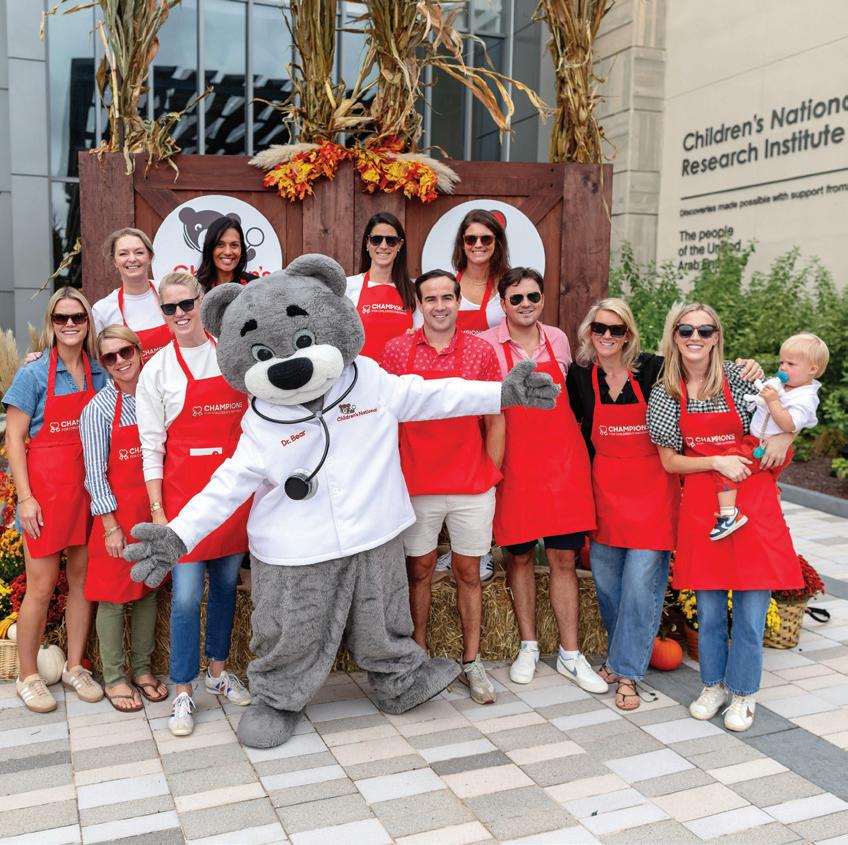
Scan to see photos of Fall Fest and the generous sponsors who made it possible.
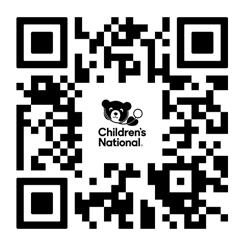
More than 10,000 registrants for the Race for Every Child 5K Run/Walk raised almost $2 million in October to elevate pediatric care at Children’s National. Patient families, staff and community members united at Freedom Plaza in Washington, D.C., and virtually for our most-attended Race to date.
Elliott, age 5, aimed to follow in the footsteps of his mom, Sarah, who placed at the Race in 2022 and 2024. He was born with a rare heart condition called Shone’s complex, meaning the left side of his heart could not pump blood effectively. Elliott overcame multiple surgeries to proudly earn his medal at the Kids Dash. “Since he was 5 days old, all he’s done is cross finish lines,” says Chris, Elliott’s dad.
Zoé designed this year’s Kids Dash medal to bring cheer to other patients and honor their abilities and experiences. After successful treatment for leukemia, Zoé ran her first 5K with a smile. “I want kids who are still struggling to see that there is always hope and to appreciate their amazing doctors and nurses,” she says.
Special thanks to our event co-chairs Karen Stauffer

and Jason Adolf, Race Committee and generous sponsors for making brighter futures possible for our patients and their families.
“It’s inspiring to hear other parents’ stories of how Children’s National helped them navigate some of the toughest situations in their lives,” Jason says. “At the Race, you see how valuable the hospital is to the entire community.”
It’s inspiring to hear other parents’ stories of how Children’s National helped them navigate some of the toughest situations in their lives. At the Race, you see how valuable the hospital is to the entire community.”
― Jason Adolf, Race co-chair

By Sean, a Children’s National parent
Christmas is a special time of year for our family. We decorate and put up our tree the day after Thanksgiving. In early December 2024, we were already watching holiday movies and decorating when my daughter Olivia, 2, needed inpatient care at Children’s National.
The previous February, doctors diagnosed Liv with acute megakaryoblastic leukemia. We lived at the hospital for months thereafter for her chemotherapy treatments and bone marrow transplant that would help keep her cancer from returning.
We noticed Liv’s oxygen levels were low and brought her back to Children’s National. She required
Care and support for Olivia throughout her medical journey inspired her parents, Jennifer and Sean, to fundraise for the hospital.
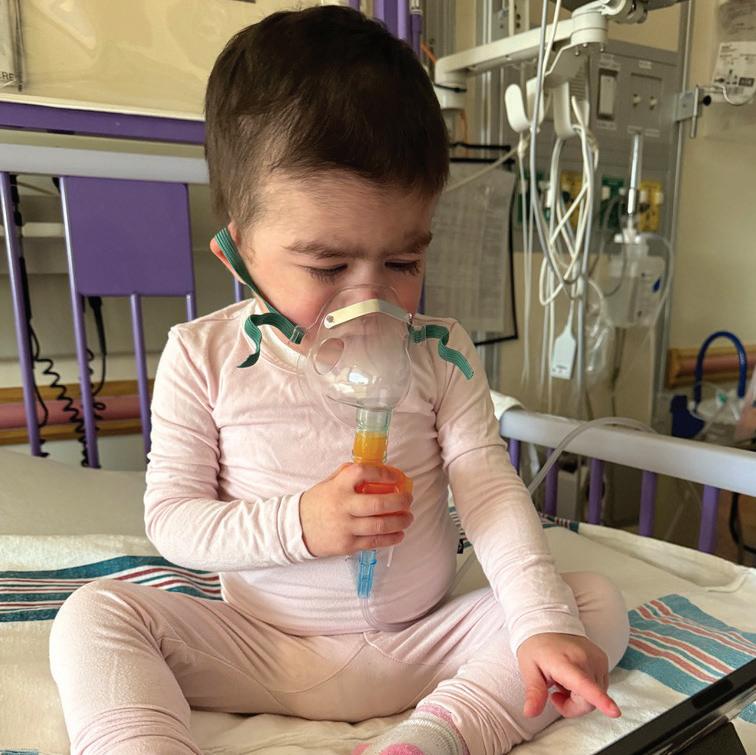
hospitalization for nearly a week while her team performed a bronchoscopy to look inside her lungs and provide treatment. It was tough being away from the rest of our family during the holiday season, especially our 4-year-old son, Brody.
Merry vibes at the hospital, including the festive Christmas tree and activities, helped us feel at home. Liv delighted in picking out donated gifts, sometimes on an hourly basis. We participated in holiday-themed arts and crafts. Volunteers read cheerful books with our daughter. She loved visiting Company, one of the hospital facility dogs, who dressed as Santa to visit the playroom. We watched holiday movies in our pajamas and decorated gingerbread houses, just like we would have done at home.
All of this created a level of
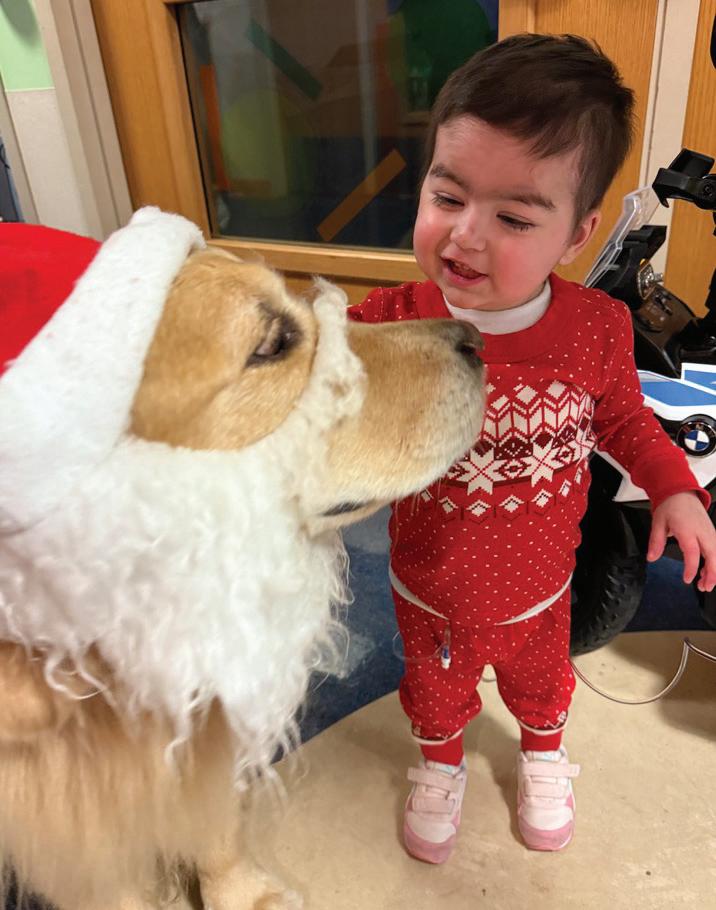
normalcy to a very much notnormal situation. It also made me realize how much we have to be thankful for, including the amazing people at Children’s National. They always make us feel like we are family. Thanks to them, our daughter is cancerfree and thriving.
I don’t think many people realize how hard pediatric cancer is for kids and families. Philanthropy helps build a support system for people struggling to survive. Children’s National gave us our daughter’s life. That’s why we created the Liv Like a Warrior Foundation. We want all children to have access to the kind of care we did.”
― Jennifer, Olivia’s mom

When Zoé was 6, her family learned she had B-cell acute lymphoblastic leukemia, a bone marrow and blood cancer. They found hope through a clinical trial that shortened her treatment plan and resulted in fewer side effects. Art therapy helped Zoé process emotions, reduce stress and lift her spirits throughout her journey. Now 12 and cancer-free, she wants to take care of others and help them smile. She has her eyes on becoming an orthodontist when she grows up. “We are deeply grateful for Zoé’s care team, the science and support we received every step of the way,” says Brigitte, Zoé’s mom.
How would you describe your experience at Children’s National?
I conquered my fears at Children’s National, thanks to the amazing people there. Everyone is so kind, friendly and comforting. It also meant a lot to my family that I joined a clinical trial that could help not only me but other kids like me in the future
Tell us about a time someone took special care of you.
Nurse Lisa always made me feel safe before chemotherapy treatments. She explained how they would insert a port, instead of a needle, to deliver the medicine and that it would not hurt a lot. My care team talked me through everything and made sure I felt brave.
What’s your favorite place or thing about the hospital?
I love the art therapy room because it has a lot of happy memories for me and is a calming space. Whenever I went, I knew it would be a good day. I sculpted with clay, painted and drew whenever I could to distract myself. It meant a lot to have the freedom to play and create to feel better.
What do you do for fun?
I enjoy sketching, especially characters, playing tennis, acting and singing. I would sing “A Thousand Years” by Christina Perri every time I went to the hospital. I also started reading a lot more and think Rick Riordan’s books are really cool. He wrote the “Percy Jackson and the Olympians” series, and I love the “Magnus Chase and the Gods of Asgard” trilogy. This year, I was excited to be an ambassador for the Race for Every Child 5K Run/Walk. I had a lot of fun training and crossing the finish line for the first time!
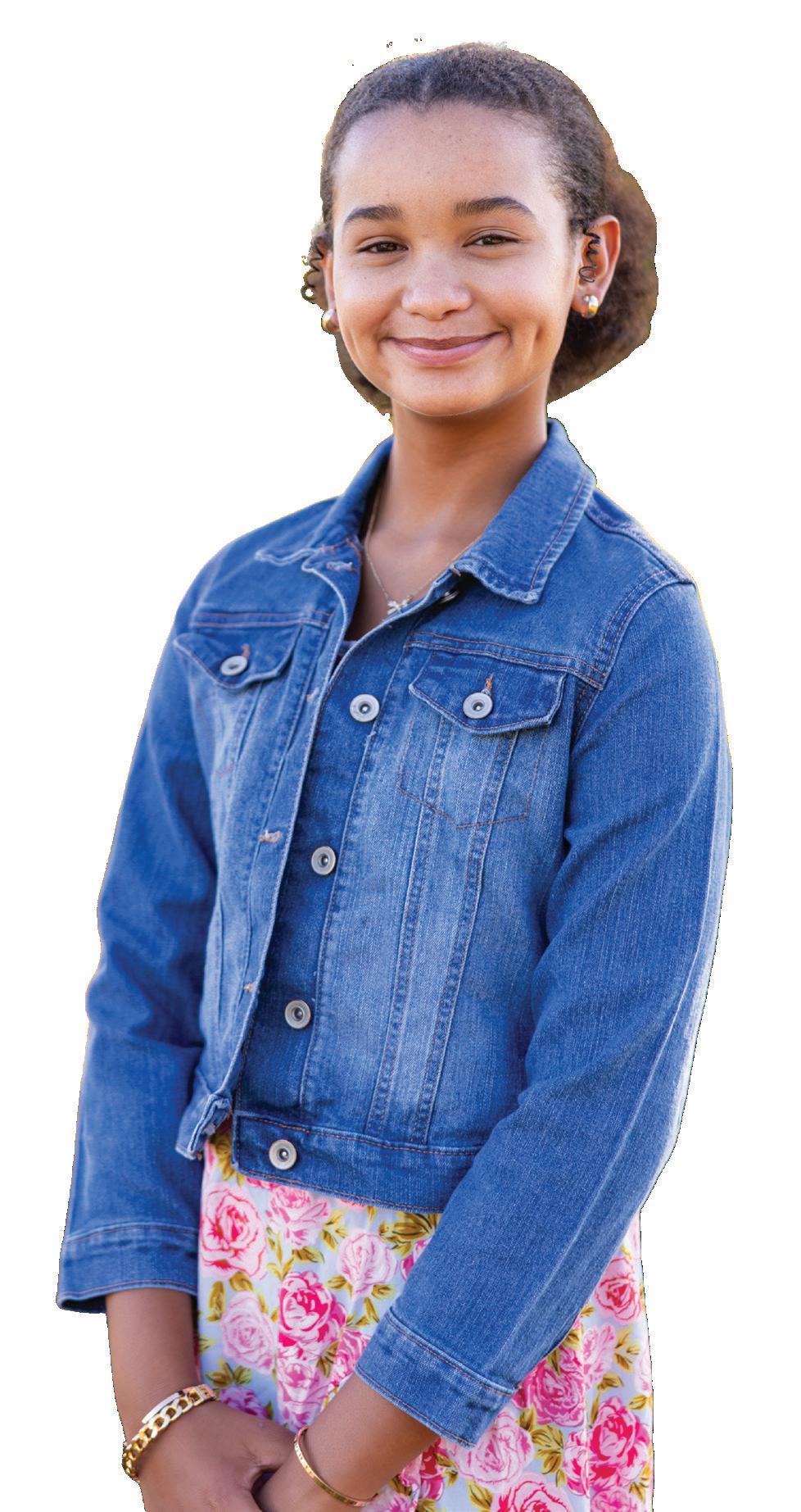
Executive Leadership
Michelle Riley-Brown, MHA, FACHE
President and Chief Executive Officer
Catherine Bollard, MD, MBChB
Senior Vice President, Chief Research Officer
Denice Cora-Bramble, MD, MBA
Special Advisor to the CEO
Gina M. Cronin, MHA, FACHE
Executive Vice President, Chief People Officer
Jeffrey Dome, MD, PhD
Senior Vice President, Cancer and Blood Disorders Center
Wayne J. Franklin, MD, MBA
Senior Vice President, Heart and Lung Center
Jordan Grossman, JD Vice President, Chief of Staff
Mary Anne Hilliard, Esq., RN, FAAN
Executive Vice President, Chief Legal Officer, General Counsel
Percival Kane Jr., MHA
Senior Vice President, Chief of Operations
Nathan Kuppermann, MD, MPH
Executive Vice President, Chief Academic Officer, Chair of Pediatrics
Ethan Leonard, MD, MBA
Senior Vice President, Hospital Based Specialties
Aldwin Lindsay, MBA
Executive Vice President, Chief Financial Officer
Matt MacVey, MBA
Executive Vice President, Chief Information Officer
DeAnn Aston Marshall, MHA
Executive Vice President, Chief External Affairs Officer
President, Children’s National Hospital Foundation
Jessica Menter, MPP
Vice President, Government, Board and Community Relations
Anthony Sandler, MD
Senior Vice President & Surgeon-in-Chief
Joseph E. Robert, Jr., Center for Surgical Care
Director, Sheikh Zayed Institute for Pediatric Surgical Innovation
Linda Talley, MS, RN, NE-BC, FAAN
Senior Vice President, Chief Nursing Officer
Elizabeth Wells, MD, MHS
Senior Vice President, Neuroscience and Behavioral Medicine Center
David Wessel, MD
Executive Vice President, Chief Clinical Officer
Physician-in-Chief
Executive Leadership
DeAnn Aston Marshall, MHA
Executive Vice President, Chief External Affairs Officer
President, Children’s National Hospital Foundation
Julie Butler
Vice President, Corporate and Community Giving
Sarah David
Assistant Vice President, Principal Gifts
Kerri Yoder Hubbard
Associate Vice President, Major, Principal and Research Gifts
John Loughner Vice President, Systems and Data Integrity
Melanie McCarty
Associate Vice President, Special Events and Stewardship
Lili O’Toole
Assistant Vice President, Annual Giving
Mandy Ranalli Vice President, Major and Principal Gifts
Leslie Schrader Vice President, Chief Marketing and Communications Officer
Elizabeth Treble
Associate Vice President, Corporate and Community Giving

